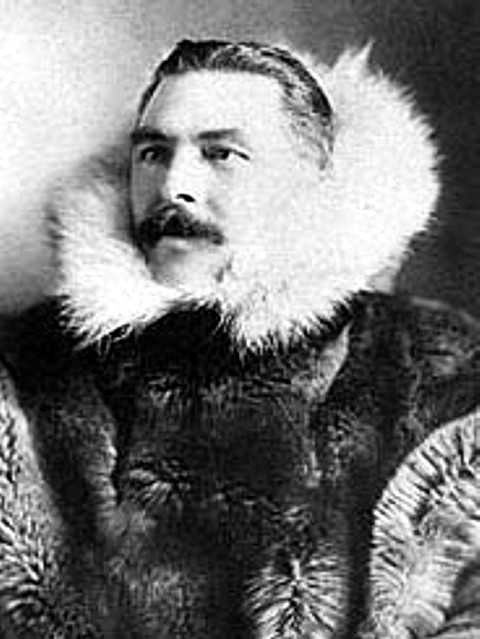
Photo submitted by Brian Fortier
Gordon Bettles, Bettles, Alaska
Gordon Bettles built the store at Bettles Village in the 1890’s and brought supplies up the Koyukuk River to supply the gold rush miners.

Photo submitted by Brian Fortier
Gordon Bettles, Bettles, Alaska
Gordon Bettles built the store at Bettles Village in the 1890’s and brought supplies up the Koyukuk River to supply the gold rush miners.
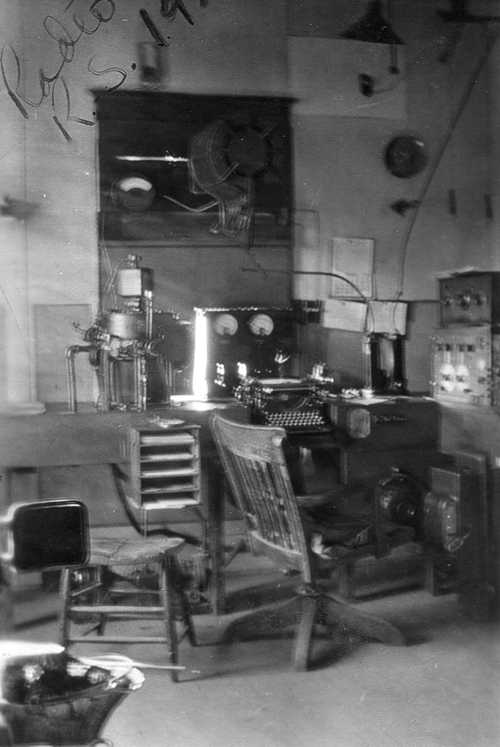
Rock Springs FSS (RKS), Wyoming, 1920’s
Interior photo of Rock Springs Radio.
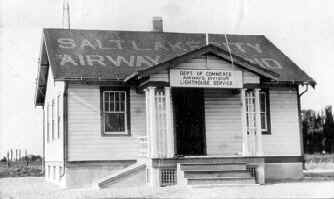
Salt Lake City Air Mail Radio Station (SLC), Utah, 1920
______________
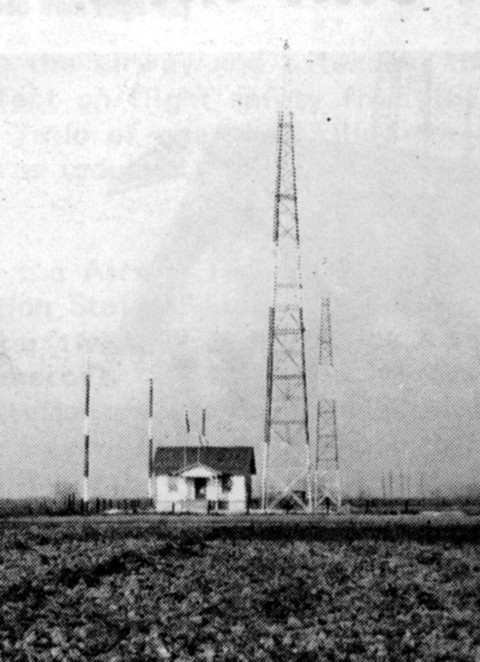 Salt Lake City Air Mail Radio Station (KSWH-KGO), Utah, October 1920
Salt Lake City Air Mail Radio Station (KSWH-KGO), Utah, October 1920
Former employees stationed at Salt Lake City Radio:
Art Johnson
Phil Coupland
Dan Cordano
J. Petrison
Ralp Baker
William C. Hill,
Art Fielder
Ray Tripp
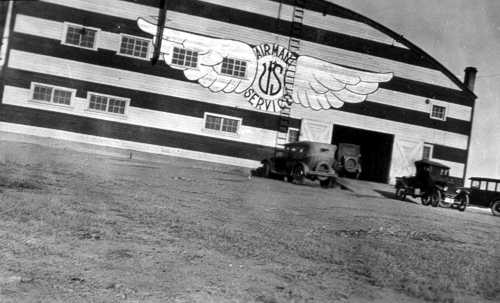
Submitted by Steve Wolff
Rock Springs FSS (RKS), Wyoming, 1920’s
Rock Springs US Air Mail Hanger
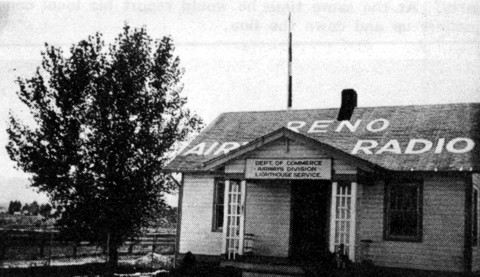
Reno Airway Radio Station (KDEK-KLK), Nevada, 1920
Former employees stationed at Reno Radio:
Lucian D. Coman
Lindsay
Cordano
Beedle
Jennings
Breniman
Fielder
Hulen
The facility was decommissioned April 3, 2007.
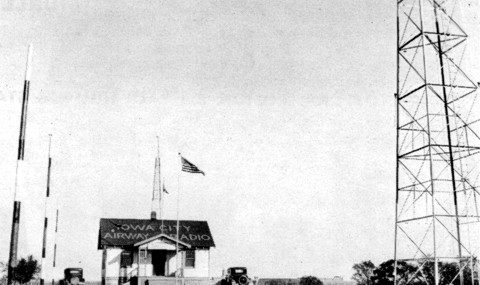
Iowa City Radio, Iowa, 1920’s
Former employees stationed at Iowa City Radio were:
P.E. White
Tony Gearhart
Silas F. Clark
Claude M. Smith.
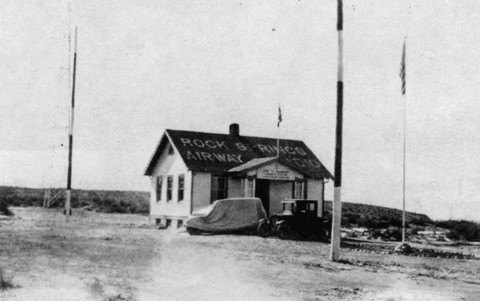
Rock Springs Airway Radio Station, Wyoming, 1921
Former employees stationed at Rock Springs:
L.D. Bates
L.D. Coman
E.C. Butler
Julius Petrison
Samuel F. Kelly
Tom Bostic
A.D. Hulen
Orville Hammond.
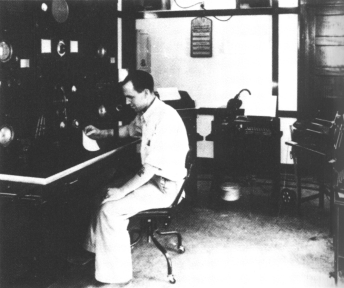
Radio Operator
This station operator shows his background. Many CW radio men came to aviation from radio shacks on ocean vessels.
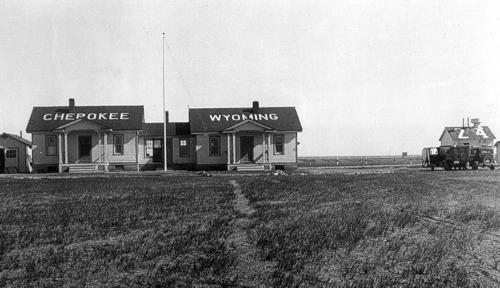
Submitted by Steve Wolff
Cherokee, Wyoming, Site 24, (year unknown)
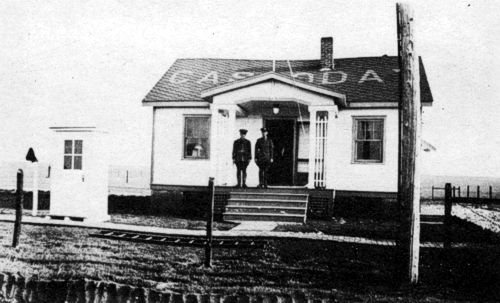
Cassoday Airway Radio Station, Kansas
Station was under the supervision of the Fort Worth, Texas office. Date unknown.
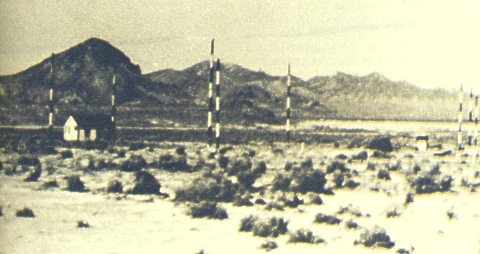
Low frequency “loop” radio range
This type was developed in the late ’20s and was non-simultaneous; that is, the range had to be shut down during voice transmission. This resulted in a temporary loss of navigation guidance in pilots flying on the radio beam.
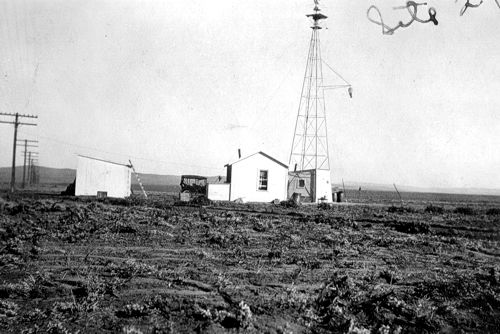
Submitted by Steve Wolff
Salt Lake to Omaha Light Beacon Station, Bitter Creek, WY, Site 19 (date unknown)
On the Salt Lake to Omaha airway and type “K” quarters with a standard 51 foot tower and two 550 gallon fuel tanks at the base. Course lights would be green denoting the presence of a landing field.
______________
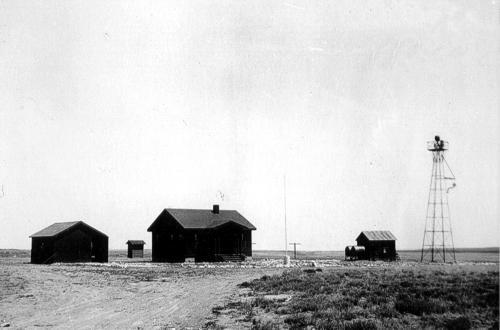
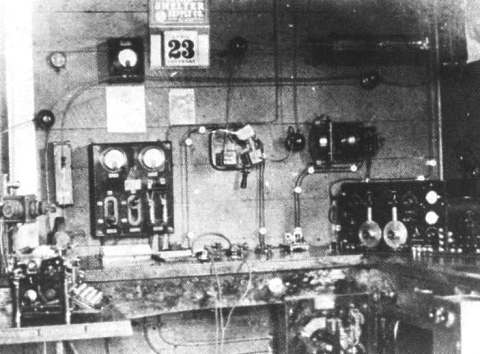
Radio-telegraph 1925
The radio-telegraph position in a 1925 Airway Radio Station, featuring both
hand and semi-automatic sending keys.
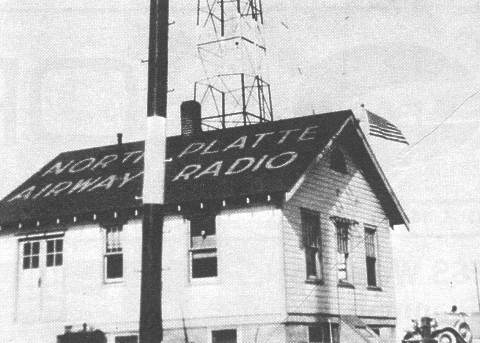
North Platte Radio (LBF), Nebraska about 1925
Typical of the buildings that served as Airway Radio Stations in the 20s and 30s was this mail order prefab structure
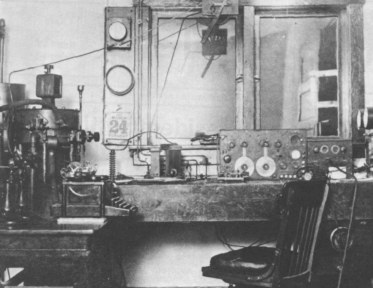
Salt Lake City Air Mail Radio Station (SLC), Utah, March 1925
Famed 2KW arc transmitter at Salt Lake City, Utah, is the type used in the earliest FSSs. The handle at the top is the wave length selector. Cylindrical object at left is the water cooled arc chamber. “CW” key or “bug” can be seen immediately in front of the receiver
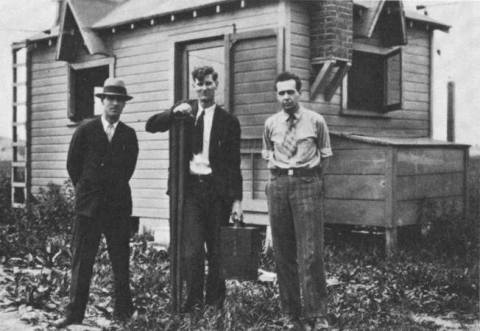
Bellfonte Radio (R/BF), Pennsylvania
This radio station at Bellfonte, PA., was one of the nation’s first, a critical stop on the New York to Cleveland run. A housing development now sits on this pioneer site.
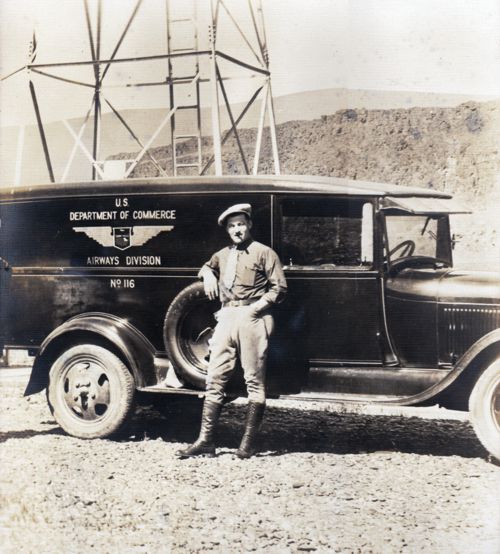
Submitted by Audra Oliver
Airway Technician, U.S. Department of Commerce
Airways sector truck and maintenance technician, name and location unknown. Unlike their modern counterparts, the airway station keepers were required to wear distinctive uniforms on the job.
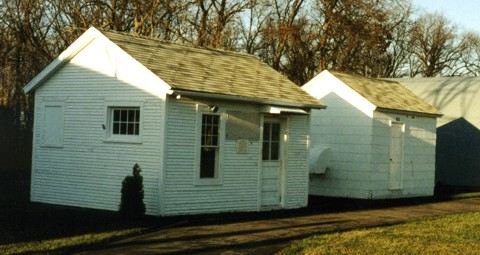
Mauston Aeronautical Light Station, Wisconsin, 1920’s
This picture is of the two buildings that comprised the Mauston Aeronautical Light Station in Mauston, Wisconsin. It was in that location from the early to mid 1920’s to approximately 1928. At that time, Mauston was decommissioned and the buildings moved to Lone Rock, WI.
The building on the left was the actual facility. The one on the right was the generator room. Sometime in the late 1940’s or early 50’s, the facility was replaced by a larger building, but the original facility building was maintained and used as a storage room. The generator building continued to house the emergency generator for Lone Rock FSS (LNR) right up to the day the facility closed. Around 1985 both buildings were again moved, this time to Oshkosh, WI and the EAA’s “Pioneer Airport” exhibit, part of the EAA museum.
______________
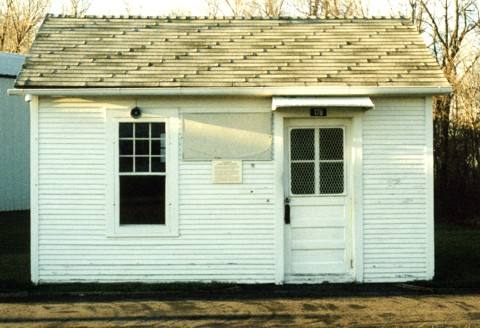 Another view of the original Mauston/Lone Rock FSS facility building. Notice the plaque on the front wall (see below). The interior has been restored to what it looked like in the late 1930’s, complete with teletype and old radio equipment. There is also a self guided recorded audio tour narrated by Ben Silko, a former LNR FSS specialist who retired in 1977.
Another view of the original Mauston/Lone Rock FSS facility building. Notice the plaque on the front wall (see below). The interior has been restored to what it looked like in the late 1930’s, complete with teletype and old radio equipment. There is also a self guided recorded audio tour narrated by Ben Silko, a former LNR FSS specialist who retired in 1977.
______________
Photos and information submitted by David A. Sbur
If you look closely you can see some faint numbers on the roofs of the sheds for the Portland-Spokane Airway, part of the C.A.M. 32 route. No trace of a concrete arrow could be found on the site.
The airport was listed in the Dept of Commerce listings in 1931 as a DOCILF (Dept of Commerce intermediate landing field). It was also used as an Army Air Force auxilliary field in WW2. It’s pretty sleepy now, the only activity is a local drone company that does it’s testing there.
Department of Commerce intermediate field, site 12, Portland-Spokane Airway. One and one-fourth miles E. Altitude, 850 feet. Irregular shape, 2,400 feet E./W., 2,000 feet NW./SE., sod, level, natural drainage; entire field available. Directional arrow marked “12 P-S.” Pole line to N., beacon tower to NW. Beacon, boundary, approach, and obstruction lights. Beacon, 24-inch rotating, with green course lights flashing characteristic “2” (.._). Aviation fuel. No other servicing facilities. Teletypewriter. Department of Commerce marker beacon, characteristic signal “H” (. . . .), operating frequencies 248 and 278 kc.
Probably the generator shed.
Inside the generator shed.
Possibly the teletype office
Unknown item
Electrical standoffs on the field along the length of the landing area but offset a few hundred yards.
The beacon does not appear to be the original 24″ size, perhaps it is an old course light?
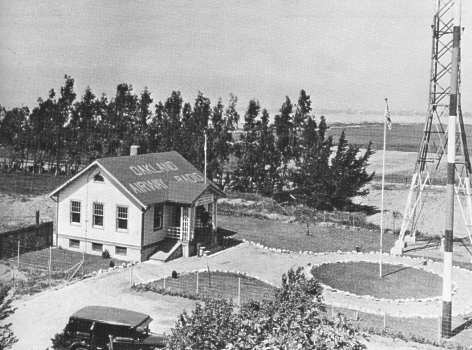
Oakland Airway Radio Station (KCV), California 1928
Located on Bay Farm Island. Prior to this, this building had been relocated from the tidal flats where it was accessed by a rowboat
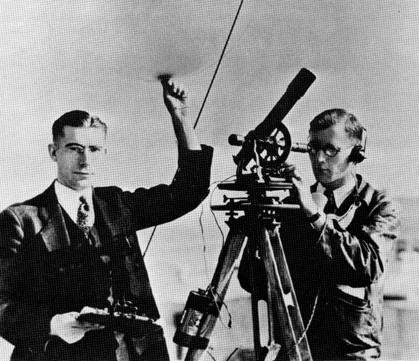
Weather observers, 1928
1928 team of weather observers in action using a theodolite and weather balloon. Location unknown.
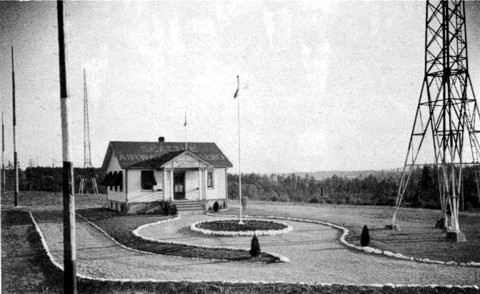
Seattle Airway Radio Station (KZC), Washington, 1928
Former employees stationed at Seattle Radio:
Herb Hela
W.A. Siminson
R.A. Clark
Herb Wilson
Norm Bliss
Bernard Swaffield
J.W. Gunsolly
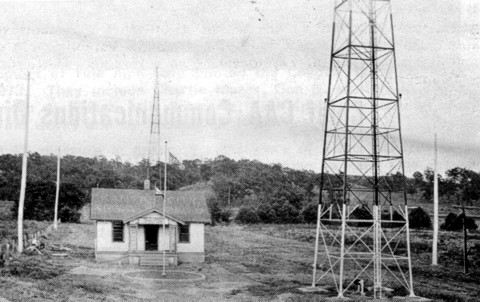
Kansas City Airway Radio Station (KRC), Missouri, 1928
Former employees stationed at Kansas City Radio: Rome Montle and Frank C. Gaynor
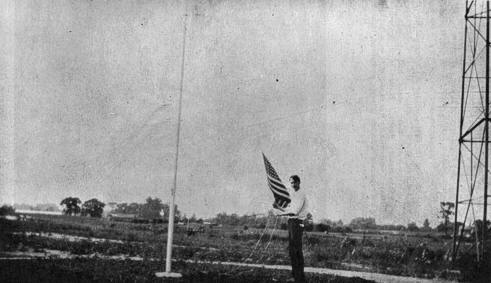
Submitted by Ed Dietz
Albany Airway Radio Station (ALB), New York, 1929
Bill Jones, first Operator In Charge, Albany, New York Airways Radio, 1930
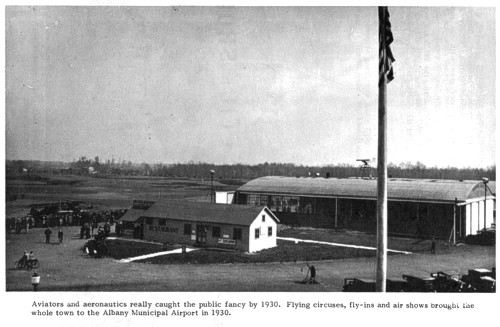
Photo caption: Aviators and aeronautics rally caught the public fancy by 1930. Flying circuses, fly-ins, and air shows brought the whole town to the Albany Municipal Airport in 1930
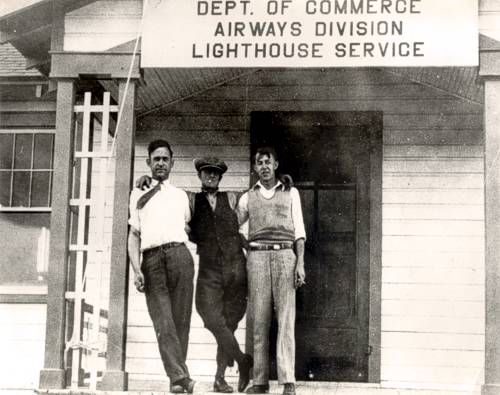
Rock Springs Airway Radio Station (RKS), Wyoming, 1929
Left to right: Sam Kelly, the operator-in-charge, Woodington, and Stan Hutton at Rock Springs Airway Radio Station, Wyoming. Rock Springs was commissioned in 1920 and decommissioned on September 31, 1991.
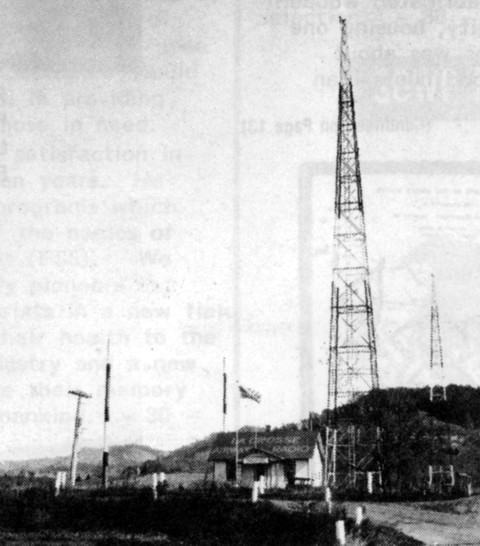
La Crosse Airway Radio Station, Wisconsin, July 1929
Former employees stationed at La Crosse Radio:
Harold C. Burhop
Samuel Allen
L.L. Arnold
A.J. Silva
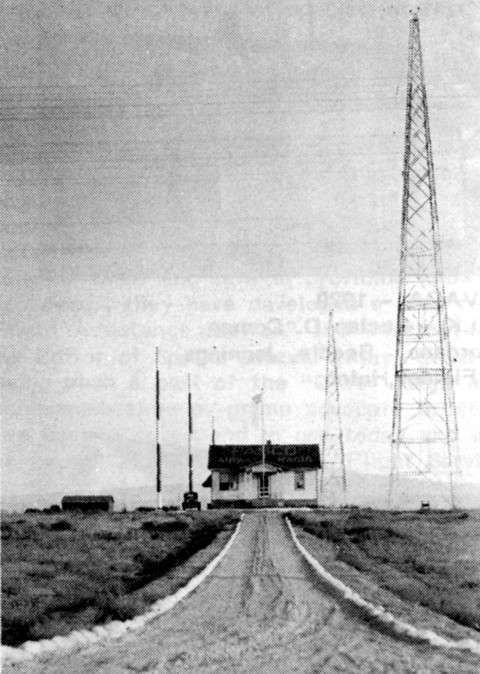
Pasco Airway Radio Station (KCS), Washington, about 1929
Former employees stationed at Pasco Radio:
Bennett
Warren Boeshore
Bill Brenimam
Harold Johnson
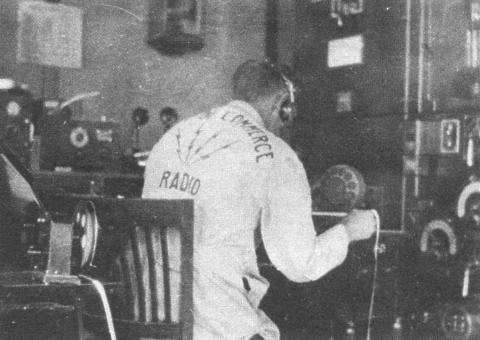
Portland Radio (PDX), Oregon, 1929
Air Commerce radio operator by the name of Carl Anderson, broadcasts from the Portland, Oregon, Airways Radio Station in 1929
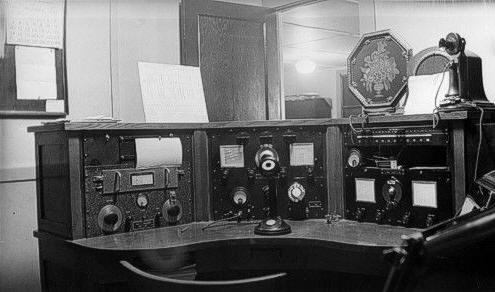
Submitted by Ed Dietz
Albany Airway Radio Station (ALB), New York, 1929
Radio operators console
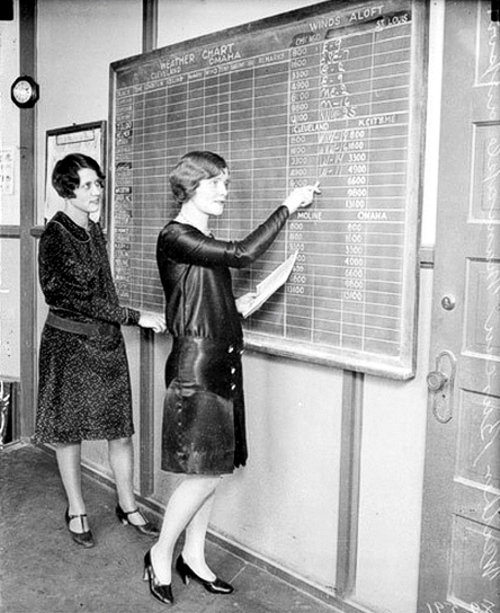
Chicago-Midway Weather Bureau, 1929
Current weather reports are collected and posted on this weather chart. Identifiable city names on this board, left side, under Weather Chart are Cleveland and Omaha. Right side under Winds aloft are Chicago, St. Louis, Cleveland, possibly Kansas City, unknown, and Omaha. Writing on the backside says “Weather Bureau Municipal Airport”.
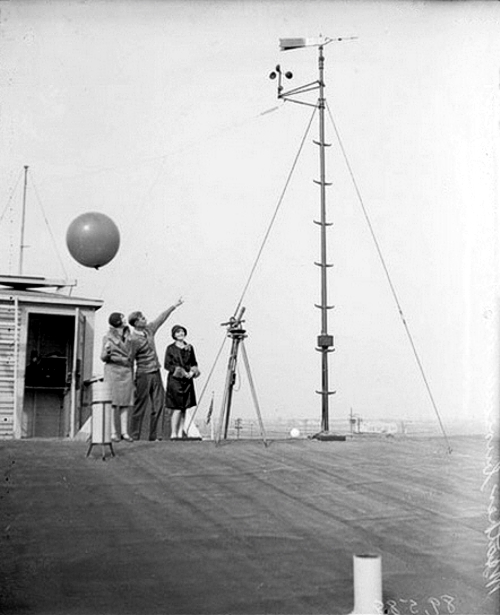
Rooftop weather recording instruments. The Weather Bureau employee is pointing at the wind speed and wind direction Instruments.
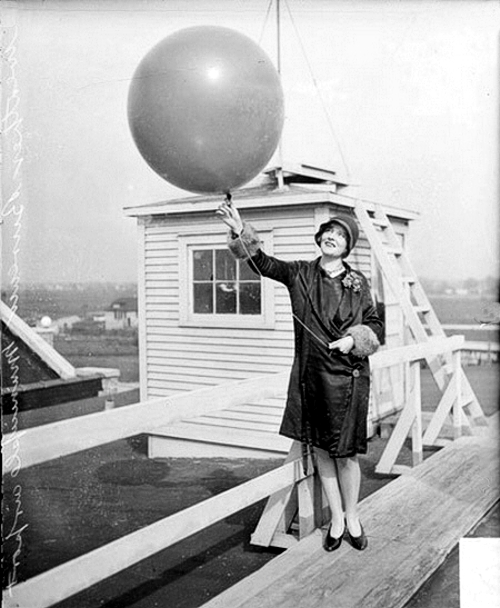
Releasing a helium filled ceiling balloon. Upon release of the balloon the weather observer, using a stop-watch, times its accent until it fades into the clouds overhead. The observer then refers to a chart to determine cloud height above the ground based on the balloons accent time. This method provides a reasonable measurement of the base of a broken or overcast layer of clouds below about 3,000 feet.
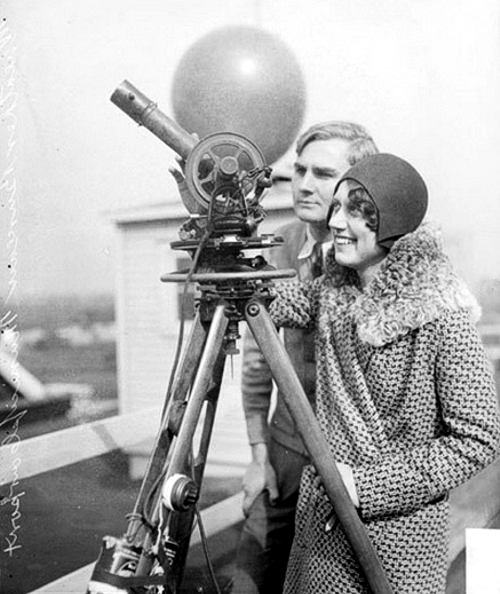
Weather Bureau employees taking some type of unknown measurement, possibly a ceilometer to measure cloud height above ground.
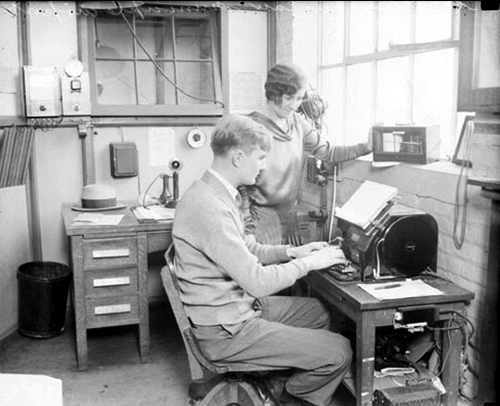
Weather Bureau employees preparing to transmit a weather observation
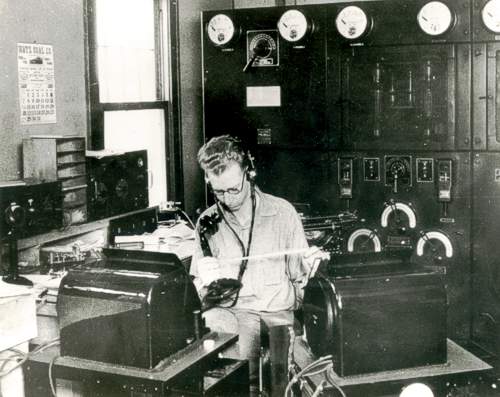
Oakland Airway Radio Station (KCV), California, July 1929
Operator-in-Charge, C.W. “Bill” Larsen, broadcasting at the Oakland Airway Radio Station
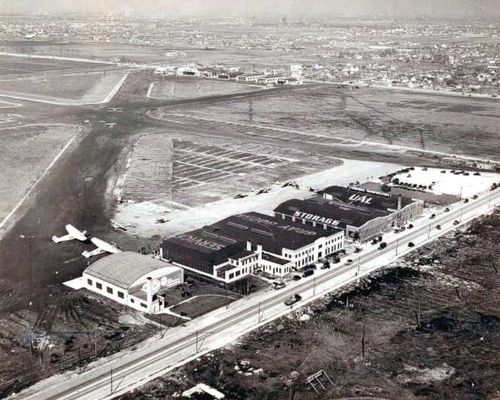
Chicago-Midway, Airport, 1929
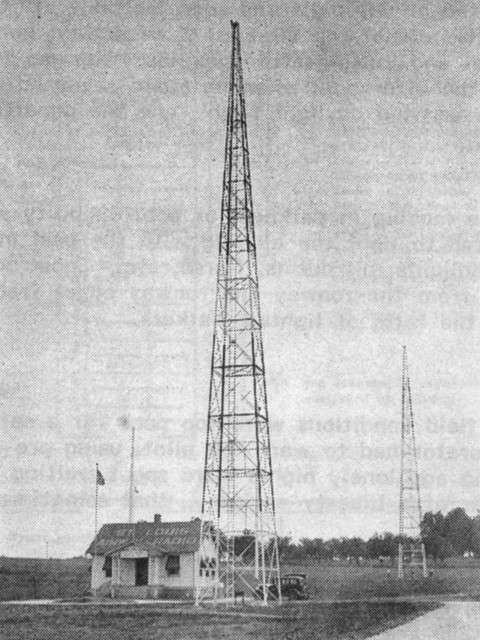
St. Louis Airway Radio Station (KCQ), Missouri, July 1929
Former employees stationed at St. Louis Radio:
Thomas C. Gale
E.E. Nichols
Claude M. Smith
R.S. Allen
Edwin Plagge
F. Robinson
M.E. Walton
M.F. O’Brien
E.E. Frain
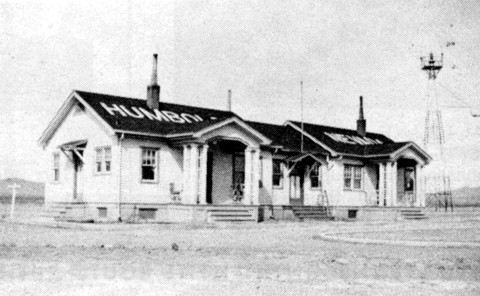
Humboldt Airway Radio Station, Nevada, 1929
This site was also a weather station and intermediate landing field. It may have been located at the Humboldt Auxiliary field, which was located at: 40 degrees 5′ 8.55″ N 118 degrees 9′ 22.34″ W.
Can anyone confirm this location?
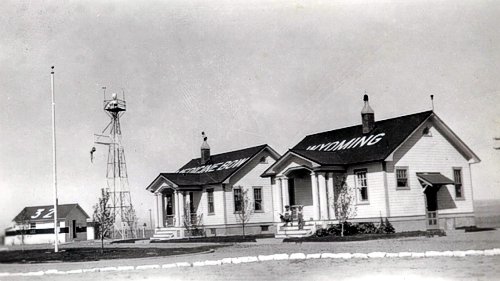
Medicine Bow Radio, Wyoming (date unknown)
Construction started in 1929 and was completed in 1930. According to the Aircraft Year Book, this site was the last station constructed to complete the entire NYC-SFO Low Frequency Range system. The building in this photo is very solid. It’s two rooms, one for living quarters and the other, a much smaller room, contained the radio gear and later in history, teletype. It was heated with a coal stove and electric power was supplied locally to operate the electrical equipment. In case of power failure a 550 gallon fuel tank (missing) supplied fuel to run a generator. The fuel tank was normally located between the caretakers quarters (above building) and the beacon tower.
Historical note: The Union Pacific Railroad is very close and Highway 30, the first to connect the Midwest with the West is 1 1/2 miles away. The Overland Trail from the 1800’s is very close and of course this Low Frequency Airway. They all converge at this point!
Photos and information submitted by Steve Wolff, Laramie, Wyoming
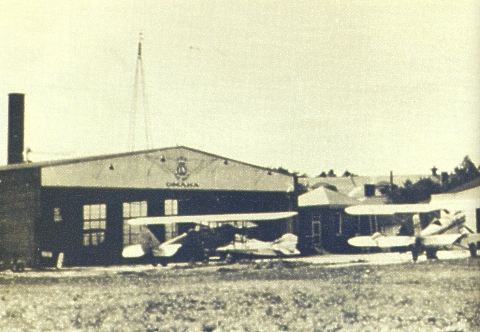
Early Flight Service Antenna (date unknown)
Spindly antennas, many of them adapted from mail order windmill towers, were typical of do-it-yourself ingenuity of early-day flight service station specialists. In spite of crude equipment, radio communications of 600 miles and more were common place
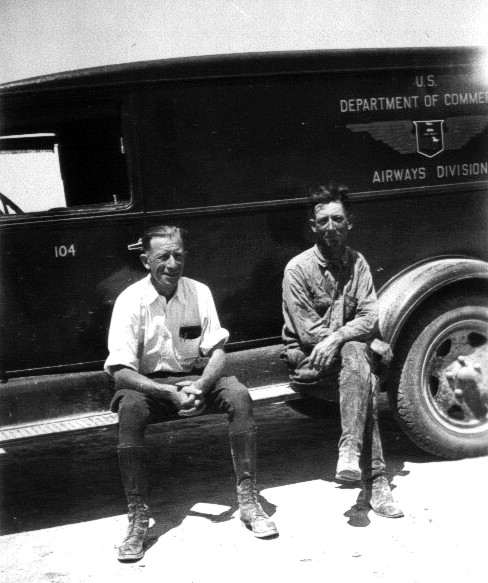
Bingham, Utah, June 12,1930
Construction crew for the light line airway beacon
______________
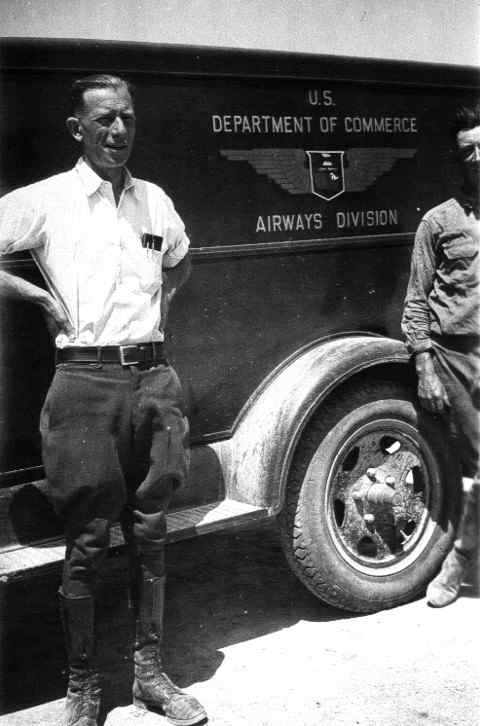
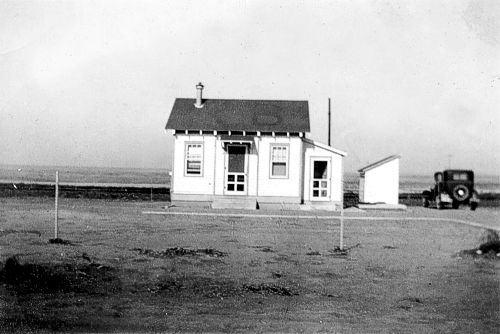
Submitted by Claude Genest
Wink Radio Station (INK), Texas, 1930’s
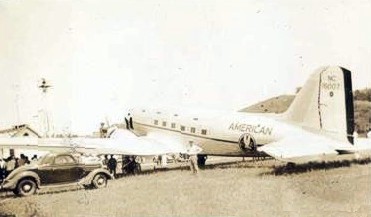
Photo by Stan Beaver
Cambridge Airport, Ohio mid 1934
American Airlines emergency landing at Cambridge with engine difficulty. The cowling was removed, repairs made and the flight continued on to Indianapolis.
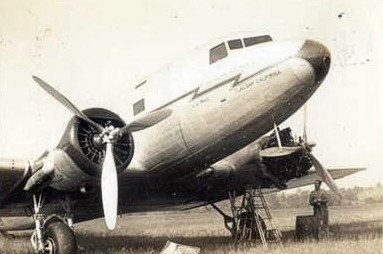
Photo by Stan Beaver
Cambridge Airport, Ohio mid 1934
Engine failure on the Pittsburgh to Columbus route at Cambridge. The Cambridge Radio and other stations provided a very valuable service to the aeronautical industry.
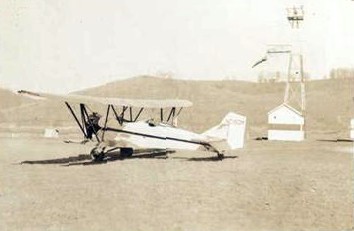
Photo by Stan Beaver
Cambridge Airport, Ohio mid 1930s.
Another emergency landing at Cambridge airport
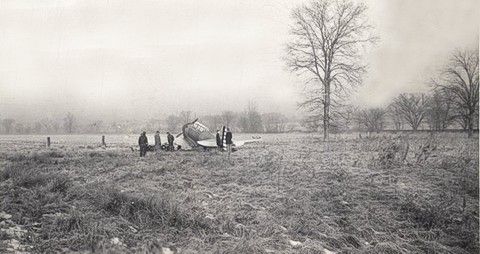
Photo submitted by Jim Jackson
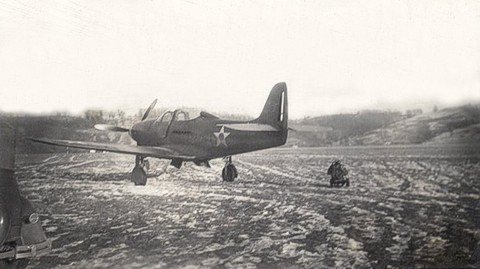
Photo submitted by Jim Jackson
Submitter said “my Dad said several P-39s had to land in Cambridge and spend some time there. This one had engine trouble. A lot of fighters were landed there by WASPS during the war for fuel. My dad flew out of Cambridge in the late 30’s and 40’s, and when I was a kid (very small). I took rides with some of the old timers there.”
Cambridge Radio, Ohio, 1930s
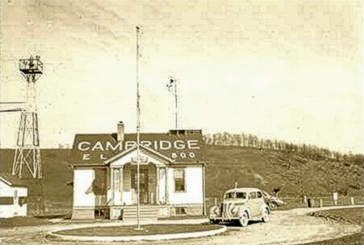
Cambridge Radio prior to closure and transfer of operations to Zanesville FSS. This small Flight Service was a haven for young ham operators learning CW (Continuous Wave or Morse Code) and learning how to type on a spare teletype machine. It was a source of employment to many area people.
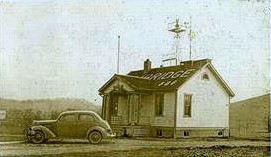
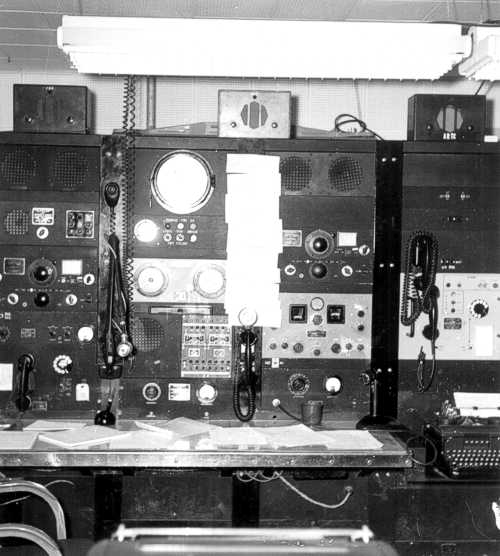
Unknown Radio Station
This photo was with a collection of Alaska Flight Service Stations and may be one of the older Alaskan Airway Radio Stations.
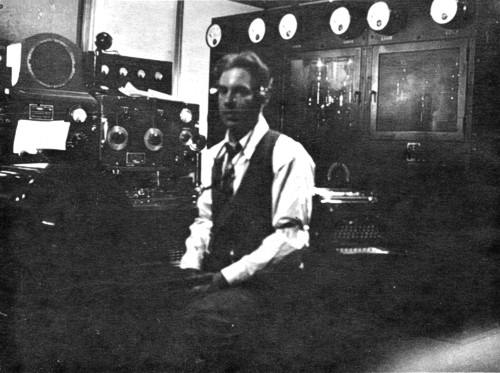
Submitted by Ed Dietz
Albany Airway Radio Station (ALB), New York, 1930
Roy Purdy, first Senior Operator
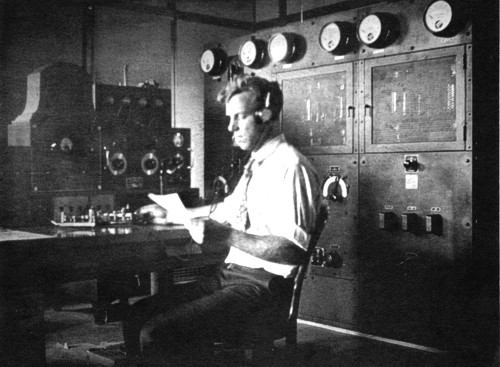 Roy C. Purdy, Senior Radio Operator, Albany Airways Radio Station
Roy C. Purdy, Senior Radio Operator, Albany Airways Radio Station
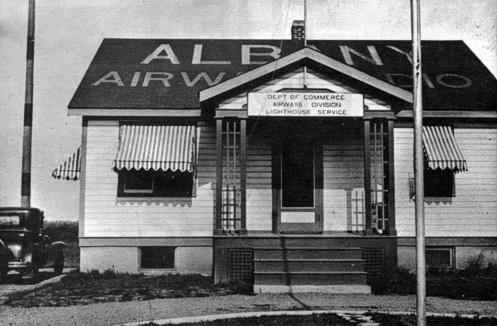
Albany Airway Radio opened July 1, 1930, with the call-sign of WWAH
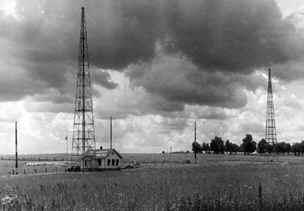
St. Louis Radio Station (STL), Missouri, 1930
St. Louis Airway Radio Station during the late 1920s or early ’30s. Barely visible in the photo is the wire strung between the tops of its twin antenna towers. During this era, some stations were making hourly weather broadcasts. When needed for safety, they also accepted messages from the airlines and transmitted them to pilots aloft
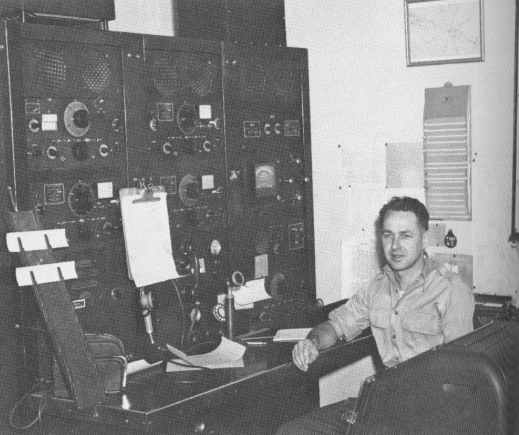
Burley Radio (BYI), Idaho, 1930’s
In the early 1930’s, the technicians took care of teletype and radio equipment at stations like this one in Burley, Idaho
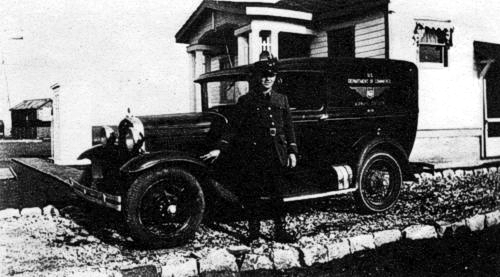
Unknown Radio Communications Station
Tom Claxton at one of the airway radio communications station. The three-letter station identifier is partially visible on the roof of the generator shack seen at the far left of the photo.
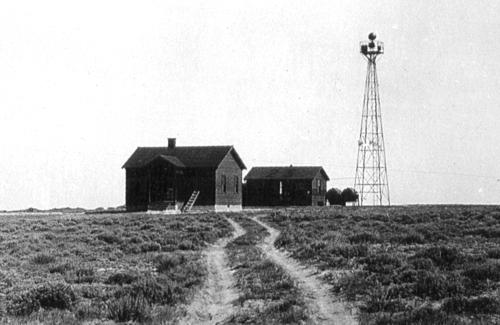
Submitted by Steve Wolff
Latham Radio, Site 23, Wyoming (year unknown)
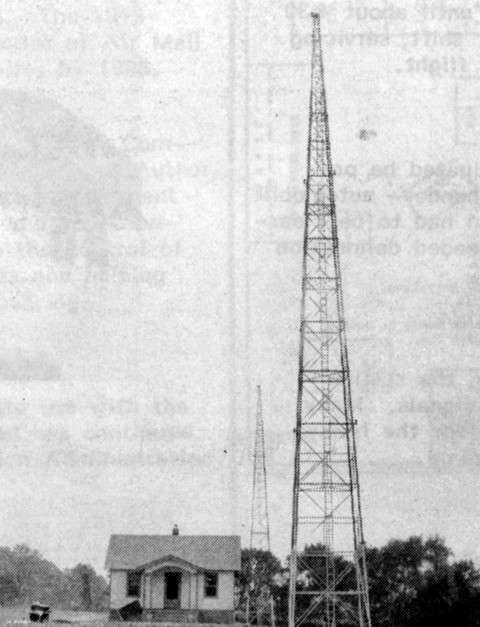
Columbia Airway Radio Station, Ohio, 1931
Former employees stationed at Columbia Radio:
C.C. Weigand
C. Malcomb
W.A. LaRue
R.E. Grages
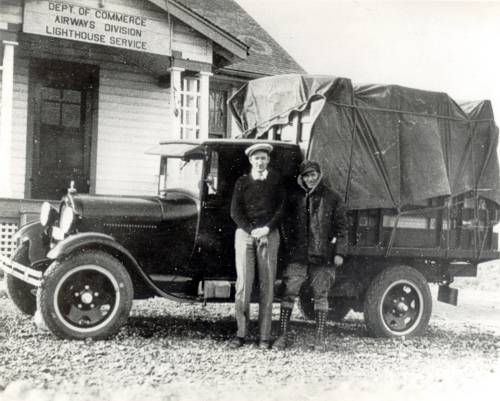
Elko FSS (EKO), Nevada. Supply Truck, 1931
Crew preparing to depart from Elko, Nevada with a load of material for the station at Buffalo Valley, Nevada in 1931
Albuquerque Historical Radio Log (ABQ), New Mexico, between 1931-2007
The Albuquerque Radio Log is an incredible 188 page handwritten log of personnel and events that occurred between the time Albuquerque Radio was commissioned on April 1, 1931 to the closing of the Albuquerque AFSS on May 21, 2007.
Albuquerque Historical Radio Log (6.7mb PDF)
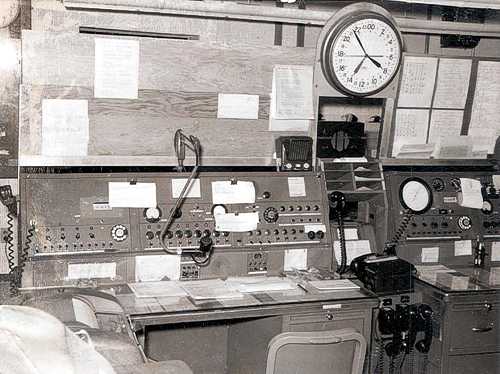
Submitted by Roger C. Bodtke
Omaha FSS (OMA), Nebraska, about 1932
The first Inflight position
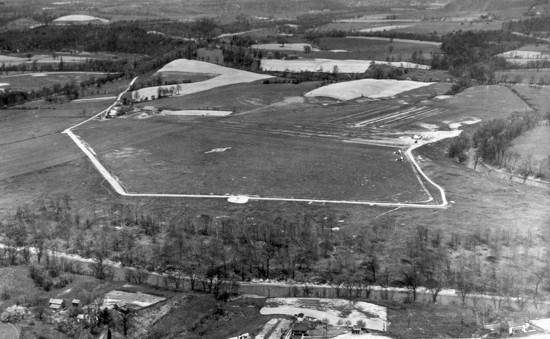
Cambridge Airport, Ohio 1932
Photo of Cambridge Airport in 1932 taken from an Ohio National Guard aircraft. Cambridge Radio is near the middle right next to two biplanes on the ground. In 2003, this site was just turned into a new high school campus.
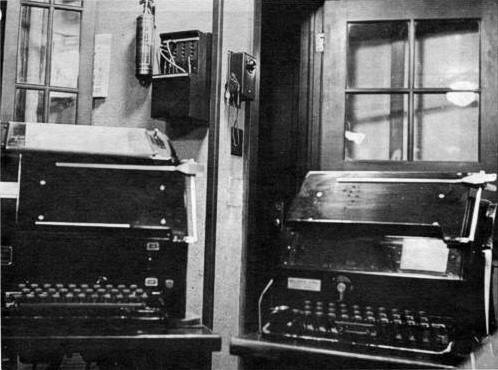
Submitted by Ed Dietz
Albany Airway Radio Station (ALB), New York, 1932
Model 15 Teletype equipment, Albany Airway Radio
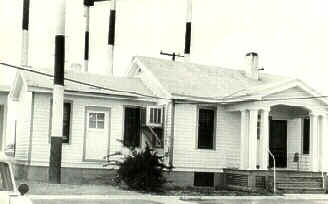
Wendover FSS (ENV), Utah, about 1932
Located in the far western desert, Wendover had been an airways installation since the 1920’s and was commissioned in 1932 as a radio beacon and flight services station.
______________
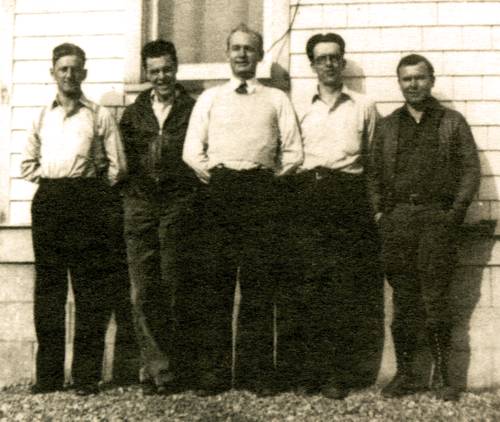
Wendover FSS Employees: A. A. Anderson, J.F Cobb, Joseph H. Tippets, Ray Tucker, and John Renfroe
El Morro Radio, New Mexico (year unknown)
Wintertime at El Morro Radio, commissioned in 1933
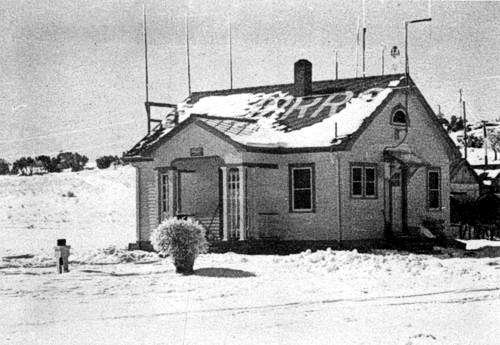
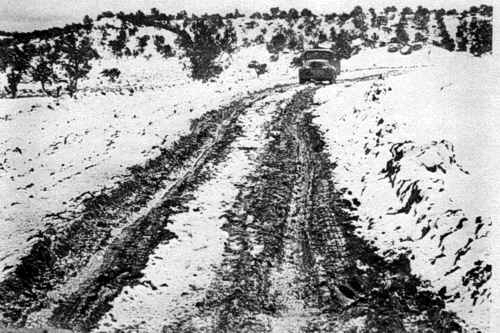
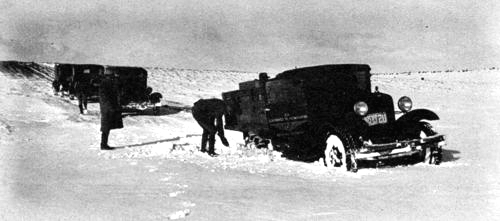
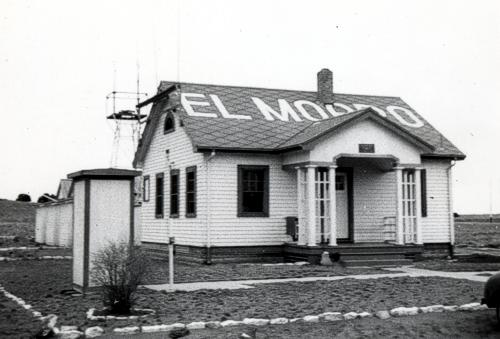
Submitted by Rose Kern
El Morro Radio, New Mexico (year unknown)
The El Morro Radio building, originally commissioned in 1933. The two western New Mexico CAA/FAA intermediate airfield stations were site 59B at El Morro CAA airfield and site 63 at Acomita CAA airfield. The next radio navigation site west of El Morro was site 54A, Deep Lake, Arizona.
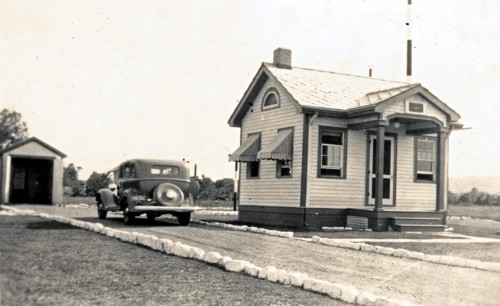
Photos submitted by Richard M. Barrett
Santo Department of Commerce, Texas, 1933
A communications station that collected and reported weather and messages
______________
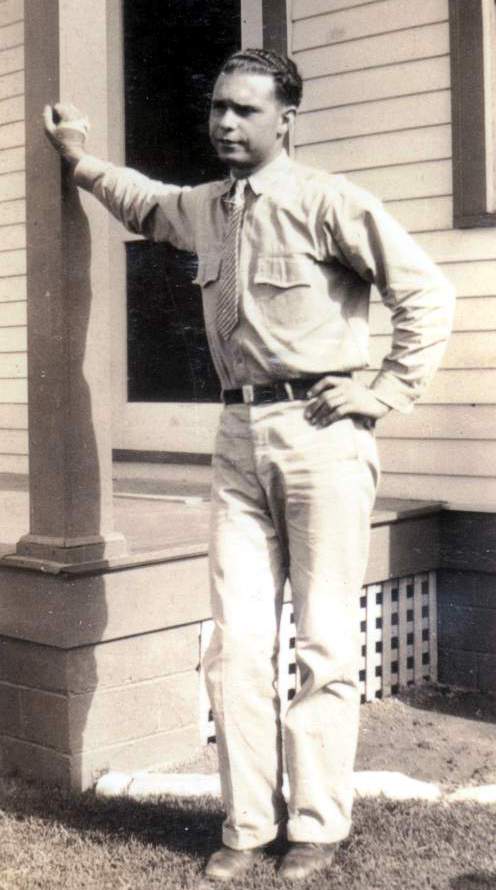
Newell Barrett, about 1933, was the second man on a two man team for the Department of Commerce. He became a CAA employee and later an FAA manager. Newell served from the bottom to the top of the Civil Service grades. He retired in 1953 as manager of the overseas communications station, WEK, in New Orleans, La., which employed 103 people.
______________
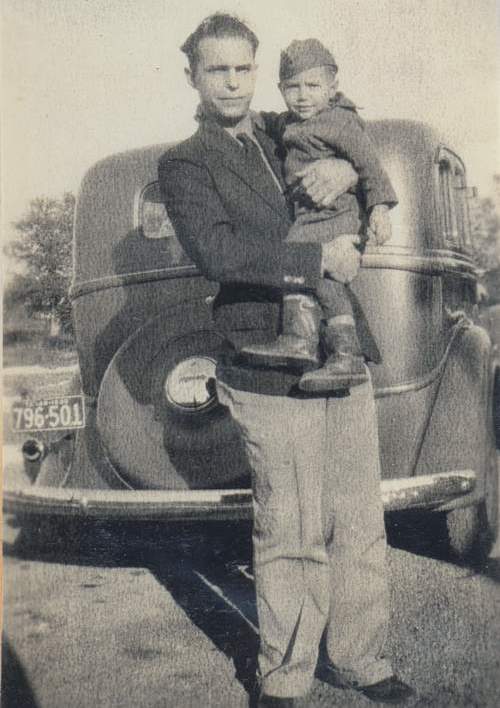
About 1933-37 – Newell is holding his son, Richard Barrett, the person who submitted these photos.
______________
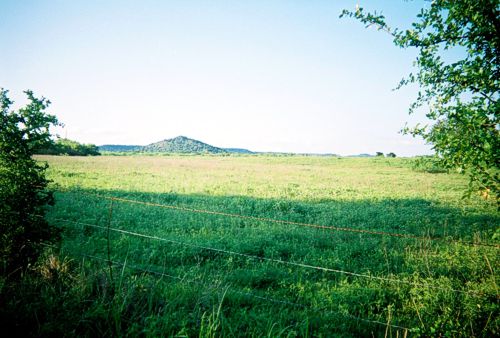
Date unknown. The Santo intermediate airfield was located here. It was a grass field then and still is. In the foreground is Turkey Peak where an airway beacon was located on its top. Newell Barrett (in above photos) serviced the beacon and changed the lamps as part of his job.
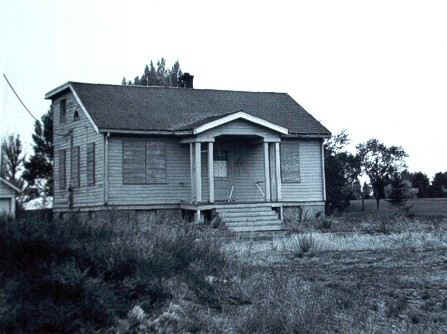
Idaho Falls INSAC (IDA), Idaho, 1934-1936
This building housed the Federal Interstate Airways Communication Station (INSAC) from 1934 to 1936. Actual date of photo is unknown.
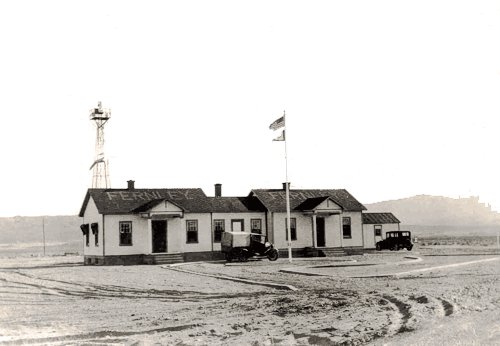
Submitted by Edward Rajki
Fernley Intermediate Field Radio Station, Nevada, Site 22, 1934
Fernley radio, located about 3 miles NE of Fernley, NV (30 miles ENE of Reno), was commissioned in 1930 and decommissioned in 1937. Fernley provided assistance to pilots flying the San Francisco-Salt Lake Airway.
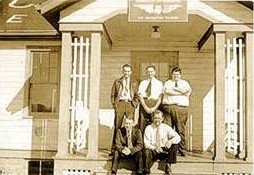
Cambridge Radio, Ohio 1934
Sitting left to right are Robert Baumgardner (1911-1987) and Station Manager, Ward Hixon (1893-1983). Standing left to Right are Stanley Beaver (1904-1991), Dave Gnessin (1914-1991), and the other is unknown.
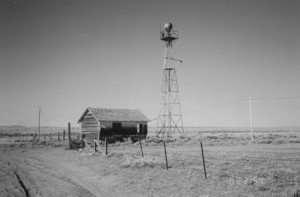
List of Radio Airway Beacons, Wyoming, 1934
The following is a 1934 list of known radio beacons in the state of Wyoming that stocked aviation fuel.
| Site # | Radio Beacon Name |
| 7 | Altamont |
| 9 | Leroy |
| 10 | Lyman |
| 12 | Granger |
| 14 | Bryan |
| 17 | Thayer Junction |
| 18 | Point of Rocks |
| 20 | Bitter Creek |
| 21 | Tipton |
| 22 | Red Desert |
| 23 | Latham |
| 24 | Cherokee |
| 26A | Knobbs |
| 28 | Walcott |
| 29B | Dana |
| 31 | Old Carbon |
| 32 | Medicine Bow |
| 33 | Rock River |
| 34 | Lookout |
| 35 | Bosler |
| 36 | Howell |
| 37 | Laramie |
| 38 | Sherman Hill |
| 39 | Arps Ranch |
| 40 | Silver Crown |
| 42 | Archer |
| 43 | Hillsdale |
| 45 | Pine Bluffs |
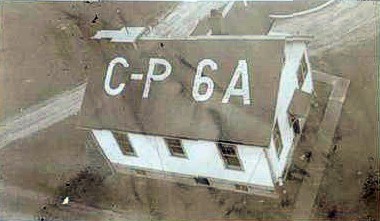
Photos submitted by Jim Jackson
Cambridge Radio, Ohio 1936
Cambridge Radio building. Photo was taken from a lighted tower.
Cambridge Ohio FSS last day of operation was 23 May 1945, and at that time Zanesville FSS took over with a 45 watt transmitter on HF phone. Article was obtained from the Zanesville Signal dated 24 May 1945. Personnel that transferred to the Zanesville FSS were Earl Casner Chief Opr; Ward Hixson Asst. Chief; Clyde Brown Operations.
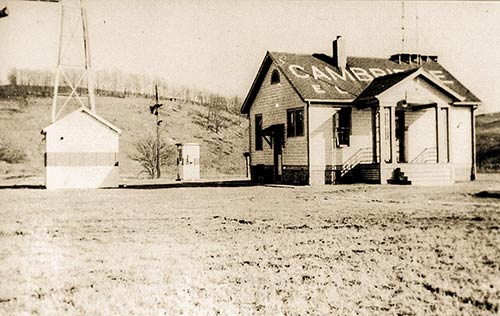
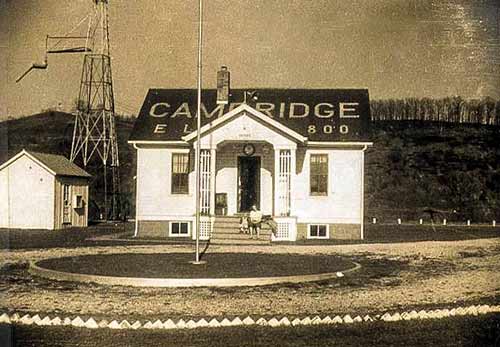
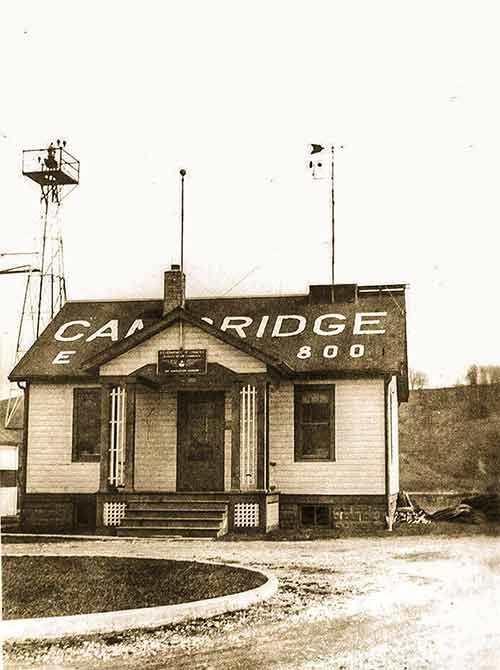
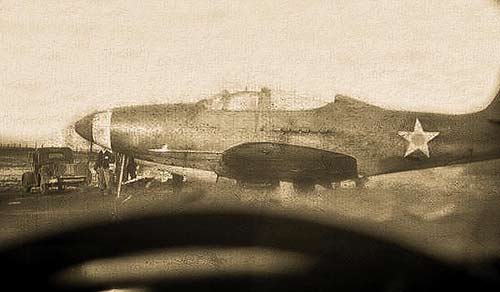 P-39 Aircraft parked on the ramp
P-39 Aircraft parked on the ramp
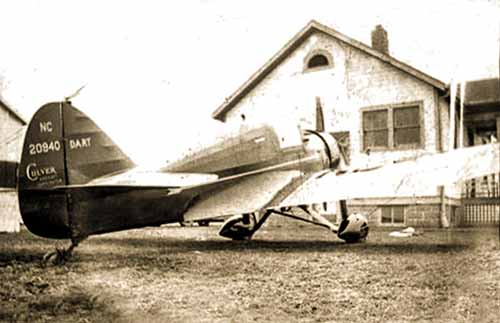 Dart 3 Aircraft parked on the ramp
Dart 3 Aircraft parked on the ramp
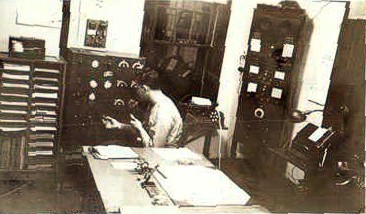
Photos by Stan Beaver
Cambridge Radio, Ohio 1936
Stan Beaver at the radio when Stan was assigned from Martins Creek, Pa. He was a 42 year employee of the Airway Radio Station (ARS).
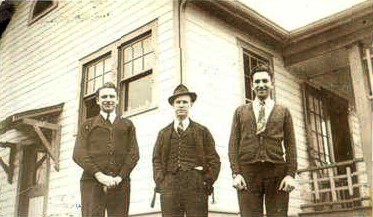 Cambridge Radio personnel, left to right, are Stan Beaver, unknown, and Dave Gnessin.
Cambridge Radio personnel, left to right, are Stan Beaver, unknown, and Dave Gnessin.
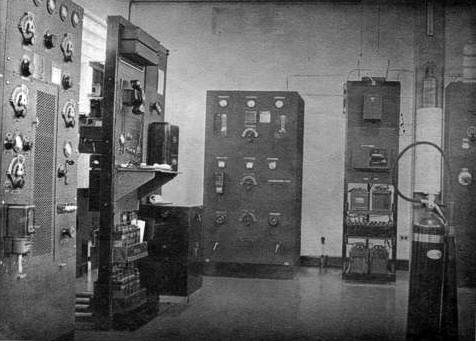
Submitted by Ed Dietz
Albany Airway Radio Station (ALB), New York, 1936
Albany, New York Airways Radio transmitter building on Wolfe Road
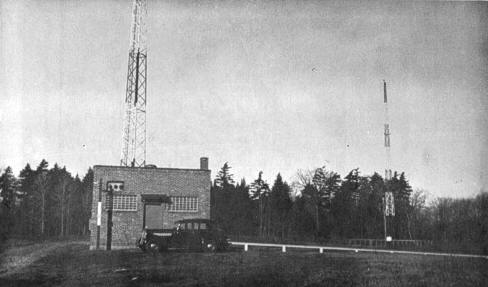 Albany, New York LM/F Range (SBR AZ) transmitter building, 1936
Albany, New York LM/F Range (SBR AZ) transmitter building, 1936
Transmitting towers were spaced 600 feet apart, and were 133 feet tall. The automobile is a 1935 Hudson “Super 6”
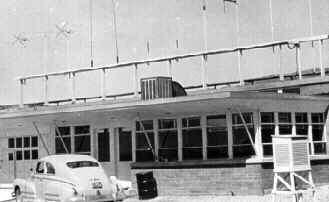
Cedar City FSS (CDC), Utah, 1937
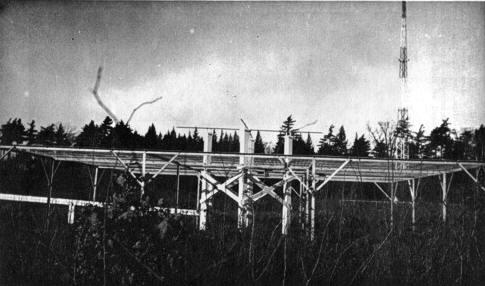
Submitted by Ed Dietz
Albany Airway Radio Station (ALB), New York, 1937
“Cone of Silence” marker on the Albany LM/F Range
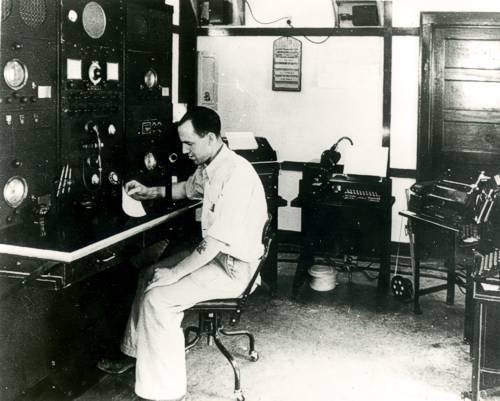
Ephrata Airway Radio Station, Washington, latter 1930’s
Station operator working at the position. The equipment includes rack-mounted RCA multi-band receivers with Model 14 and 15 teletypewriters in the rear
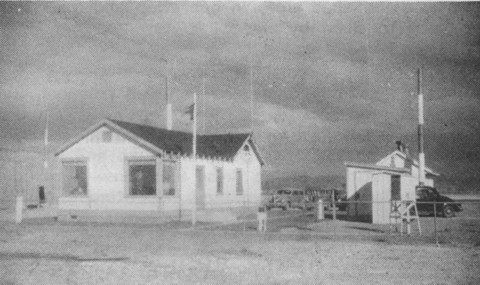
Burley Airway Radio (KCEI), Idaho, 1937
Former employees stationed at Burley Radio:
G.W. Hurst
Busby
Thurman
Ross
Wall
Peirce
Nee
Storm
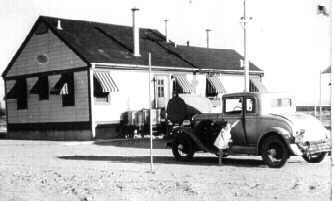
Silver Lake Radio, California, 1938-1950
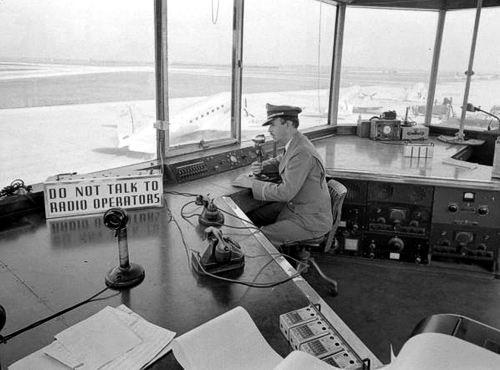
Chicago-Midway, Unknown Facility, 1938
Unknown type of radio operator, perhaps an airline dispatcher
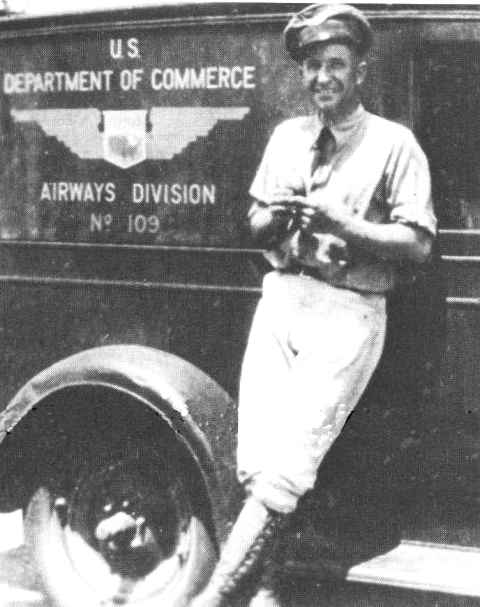
Airway Technician, U.S. Department of Commerce
Airways maintenance technician, “Dusty” Rhodes takes a break alongside his sector truck in the late ’30s. Unlike their modern counterparts, the airway station keepers were required to wear distinctive uniforms on the job.
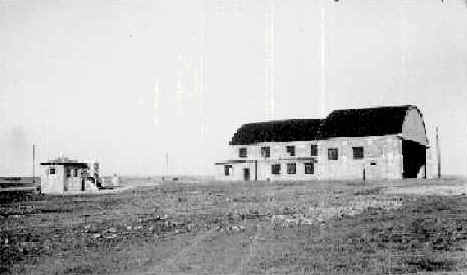
Rapid City National Weather Service, South Dakota, 1939
Weather Bureau station (left) and hanger at the Rapid City Airport in 1939. Site is presently Ellsworth Air Force Base.
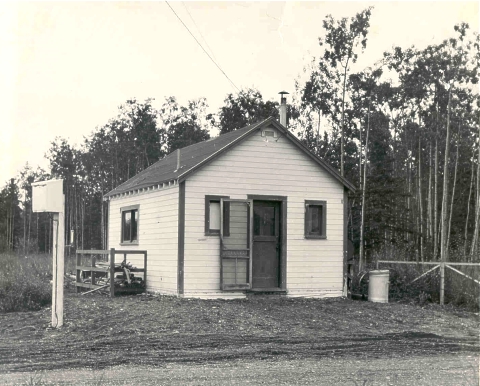
Anchorage Control Station (ANC), Alaska, 1939-1941
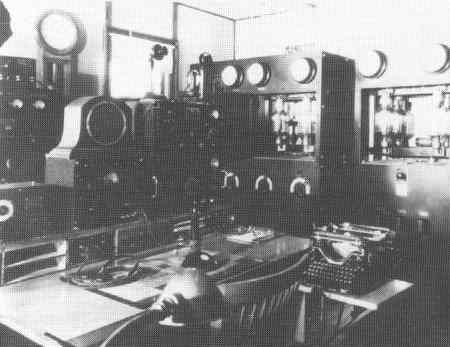
Buffalo Radio (BUF), New York (date unknown)
U.S. Airways Radio Station WWAB, Department of Commerce, was located in Buffalo, New York. The Station held the call letters of WWAB until 1961.
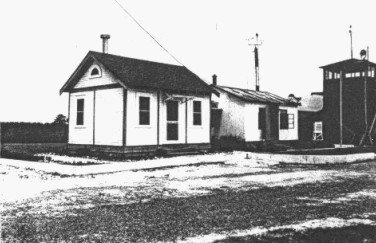
Cross City CAA/FSS (CTY), Florida, Between 1940 and 1950
Cross City served as a CAA and FSS station from July 1940 to May 17, 1960
Historical List of Alaska Flight Service Managers and Staff
January 1 1940 – The CAA established Region 8 covering all of Alaska. Marshall Hoppin was appointed Regional Administrator.
Assistants were:
Walt Plett, Assistant. RA
Al Hulen, Chief Communications
Jack Beardslee, Airway Engineer
G.A. Whittaker, Chief Fairbanks
Bill Hickock, Chief Anchorage
Al Hulen relieved Hoppin as R.A. (Al Hulen was the First Communications man to become Regional Administrator in the CAA).
Staffing of stations were as follows:
1940
Gravino Island – Hoilingsworth
Cordova & Fairbanks – Whittakerm
Juneau -Vic Post
Nome – Grant McMurry
Ruby – Geo Beckett
Summit – J. Flynn
Talkbtna – Ed Musgrave
Yakutat – Thomas Cianfrani
1941
Aniak & Kenai – Lawton
Kodiak – Carl Bassler
McGrath & Moses Point – Norris Kumler
Sitka – Ray Operlund
1942
Bethel – Wootan
Farewell – Mckay
Galena – Ralph Jennings
Gulkana – Johnson
Gustavus – Dufrane
Homer – Gulley
Iliamna – Uzzell
Kotzebue & Minchumina – Dick Collins
Northway – Carl Shute
Yakataga – Joe Tippetts
Big Delta – Inman
1943
Nenana – Robert. Leise
Tanana – John Andrews
Unalakleet – Ed Klopp
1944 and later
Bettles – Robbins
Skwentna – George Wilkins
OTHER – Precise Date Unknown
King Salmon (48) Plagge
Middleton Island (MRL)
Petersburg – Vernon Counter
Point Barrow – Roy Roose
Fort Yukon (WB 278KC) – John Flynn
The OFAC (Overseas Station) was commissioned at Anchorage Dec. 1, 1942 – E.F. Bill Hickok, Chief. The OFACS at Everett, Washington was commissioned at the same time to provide communications stateside. During 1942 Flight Assistance Service was officially inaugurated by CAA at all Stations.
![]()
Submitted by Steve Owen
Guadalupe Pass Radio Beacon Site, EP FW9, Texas, about 1940
Aerial view taken by Life Photographer, possibly David Scheram
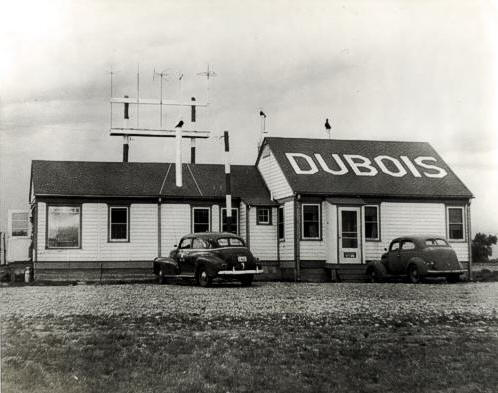
DuBois Radio (DUJ), Pennsylvania, about 1940
Station types of the late 1930’s or early 1940’s. There were several versions of this type of add-on structure.
![]()
Submitted by Steve Owen
Cassoday Radio Beacon Site, Kansas, 1940
Aerial view taken by Life Photographer, David Scheram
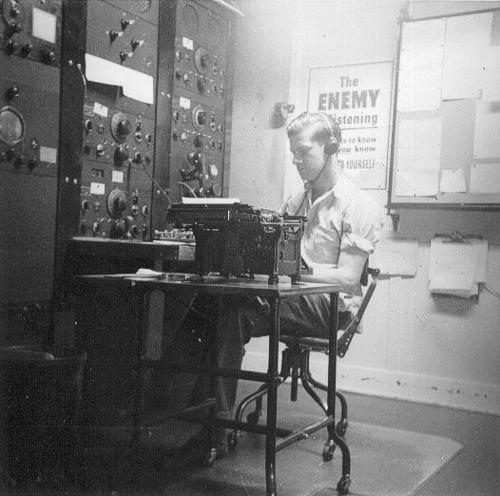
Submitted by John Keith
Mullen Pass Radio, Idaho, about 1940
John R. Keith at the radio console. He started his journey with the US Navy as a radioman on the USS Pelican, a seaplane tender. One of the skills he learned in the Navy was to pound out an
amazing number of words per minute on an old manual typewriter. John also took a photo of Amelia Earhart, probably on the day she was last seen alive.
After leaving the Navy, he joined the Civil Aeronautics Authority (CAA). His first duty station is believed to be at Mullen Pass, ID about 1940. Most of John’s career path is depicted below starting in July 1942. You will notice that he didn’t do a standard bureaucratic job advancement. He was insatiably curious, so he wasn’t too worried about the grade/position, rather, he wanted to experience new places as noted by his son, also John Keith.
| 07/42 Haines, AK | Aircraft Communicator |
| 02/43 Fairbanks, AK | Emergency Relief Communicator |
| 02/45 Gulkana, AK | Chief Aircraft Communicator |
| 05/48 Homer, AK | Chief Aircraft Communicator |
| 10/48 Anchorage, AK | Airways Operations Specialist (AOS) |
| 04/49 Haines, AK | Station Manager |
| 06/52 St. Thomas, VI | AOS |
| 12/52 Superior, MT | AOS (until 10/53) |
| Worked in civilian businesses | |
| 01/55 Battle Mountain, NV | Electronics Technician |
| 01/56 Galena, AK | AOS |
| 12/56 Yakataga, AK | Supervisory AOS |
| 03/58 Farmington, NM | ATC Specialist |
| 09/58 Santa Barbara, CA | ATC Specialist |
| 07/61 Washington, DC | Communications Officer (until death in 04/67) |
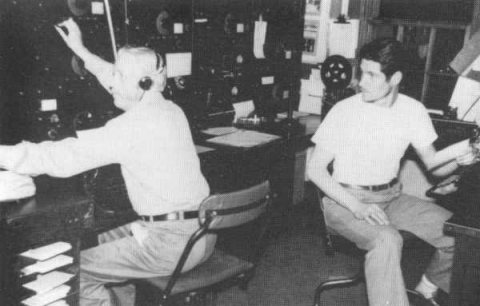
Haines Radio (HNS), Alaska, about 1940’s
Chief Albert (Whitey) Machin (left) and Carl Shute (right) at work in the Haines Flight Service Station, 1945/1946. Haines was commissioned on October 10, 1940 and decommissioned on January 11, 1953.
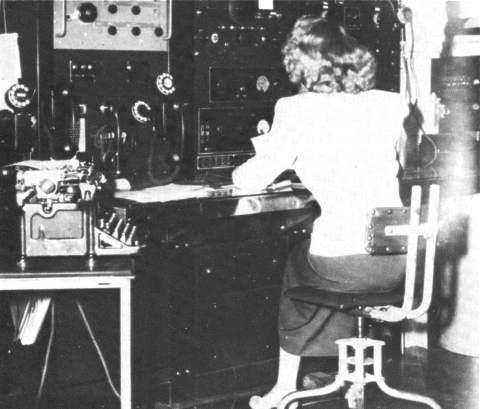
Radio Operator 1940
In the early days, both en route centers and airport towers often had to route communications radio stations such as this. These forerunners of Flight Service Stations (Interstate Airway Communication Stations -INSACs) were often manned by women, particularly during World War II.
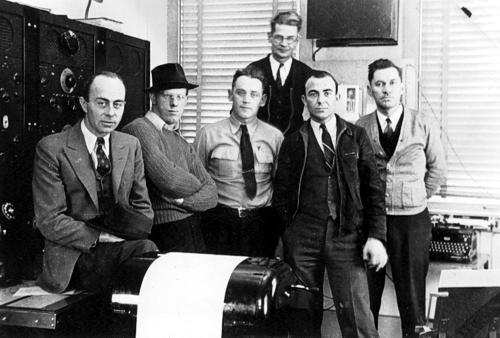
Photo taken by Kermit Karns and submitted by John Spencer
Cherokee, Wyoming INSAC Radio Crew, Site 24, 1940
Crew names, left to right, Cressie W. Hamre, E. G. Sins, Joseph Arlt, Arthur M. Brukhardt (rear), Chief; Earnest G. Igo, and Percy Spencer.
John Spencer, son of Percy Spencer (far right), said his father joined the CAA in 1940, and his first assignment was at the Cherokee Airways Station in Wyoming, where this photo was taken, according to his notes on the back of the print. See letter of employment offer, dated January 2, 1940 below.
______________
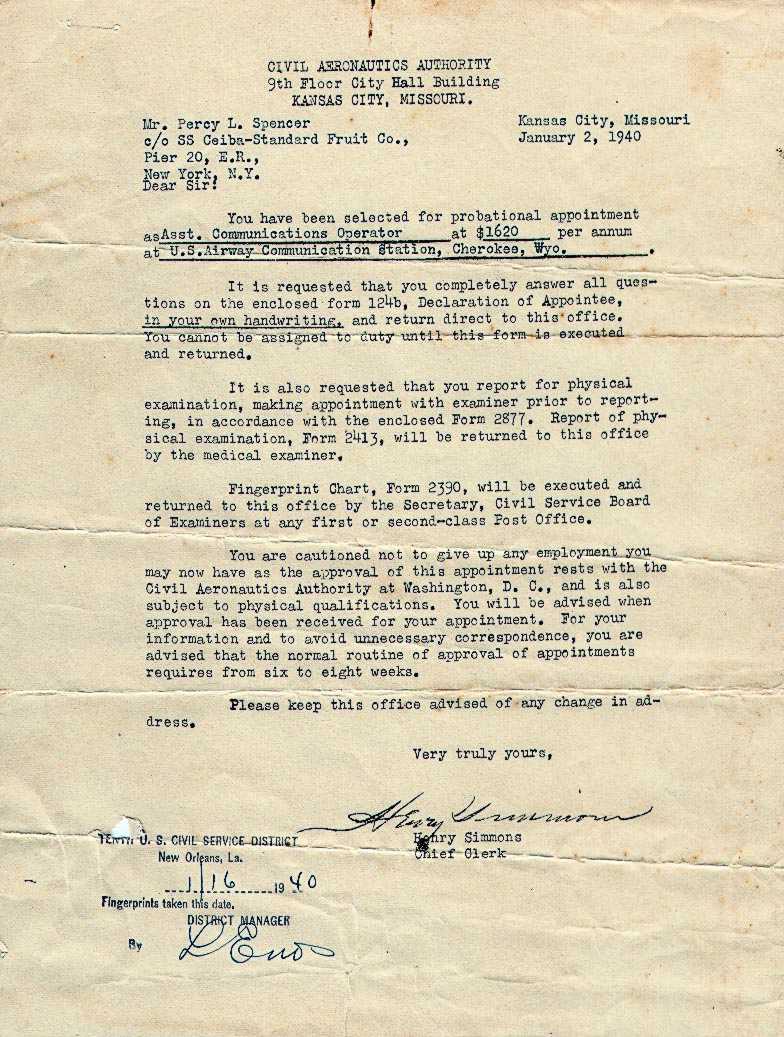 Offer of Employment Letter, Cherokee, Wyoming, Radio Site 24, January 2, 1940
Offer of Employment Letter, Cherokee, Wyoming, Radio Site 24, January 2, 1940
Letter received from the Civil Aeronautics Authority in Kansas City, KS, offering employment to Percy Spencer
______________
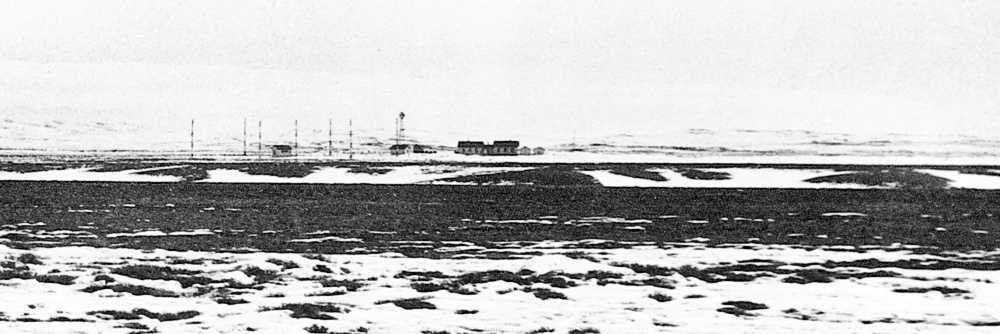 Photo taken by Kermit Karns and submitted by John Spencer
Photo taken by Kermit Karns and submitted by John Spencer
Panorama view of the Cherokee, Wyoming Radio Station
______________
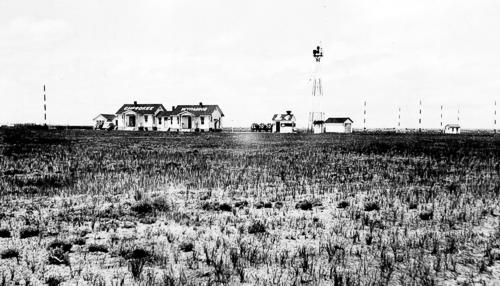 Photo taken by Percy Spencer and submitted by his son, John Spencer
Photo taken by Percy Spencer and submitted by his son, John Spencer
The Cherokee, Wyoming Radio Station rested at 7,070 feet above sea lever
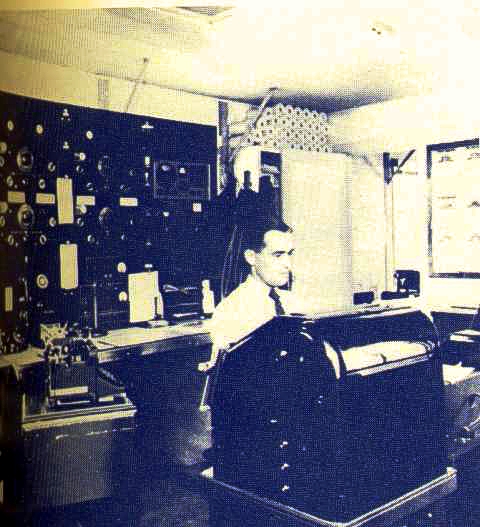
Everett OFACS (PAE), Washington
Overseas Foreign Aeronautical Communications Station at Everett, Washington, in the early 1940’s was the forerunner of the International Flight Service Station
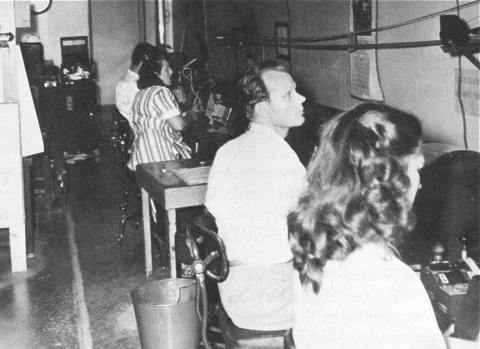
Honolulu (HNL), Hawaii, Teletypewriters, 1941
Communications between the CW operators and the teletypewriters was via conveyor belt. Messages would come around to the drop-off point in front of the machine operators. From left to right, Pobanz, Pauley, and Casey, where often as not, it would miss the box below and sail in behind the teletypewriter machines.
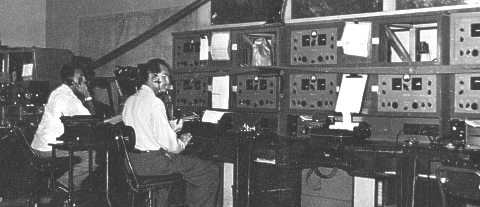
Honolulu OFACS (HNL), Hawaii, 1941
The man with the “cans” on his ears is Johnny Johnson at the Honolulu OFACS, around 1941
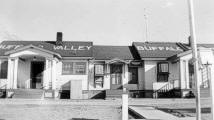
Buffalo Valley Radio and Radio Beacon, Nevada, 1942
The left side of the building consisted of living quarters. The radio station was located in the center and the right side was temporary housing or bachelor quarters. The building on the left was moved to Battle Mountain and still in use today (2007) as an FAA office.
COMPARE PHOTOS: Below is the same photo perspective taken by Robert Pearce in August 2007. The sidewalk leading up to the entrance is still there but the old buildings are no longer there. The short vertical pipe in the lower right corner is the stub of the flagpole in the above photo, far right side.
Buffalo Valley Radio Lat/Long: 40°23’55.36″N 117°19’23.79″W
______________
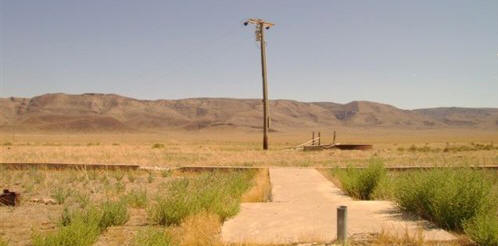
Buffalo Valley Radio and Radio Beacon, Nevada, 1942
This is the location where the Buffalo Valley Radio Station was located in the 1940’s.
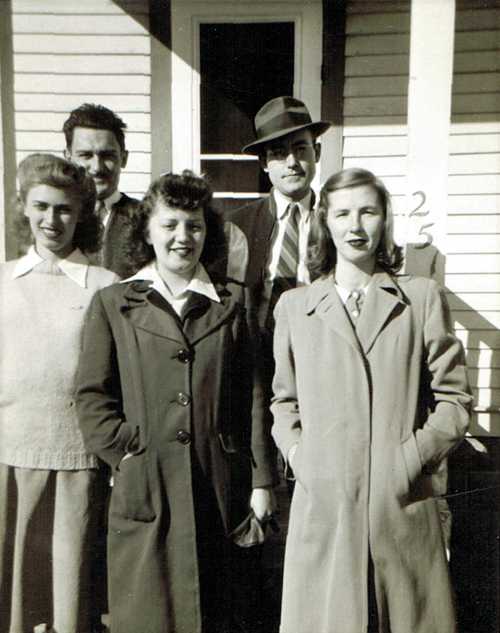
Submitted by Ted Manis
Gladwin CAA (GDW), Michigan, 1943
Gladwin CAA employees
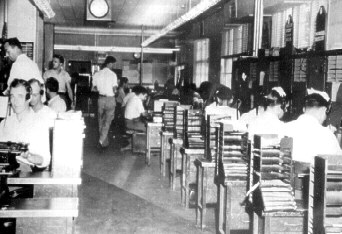
OFACS Radio Positions
Radio positions in an Overseas-Foreign Aeronautical Communications Station WWII
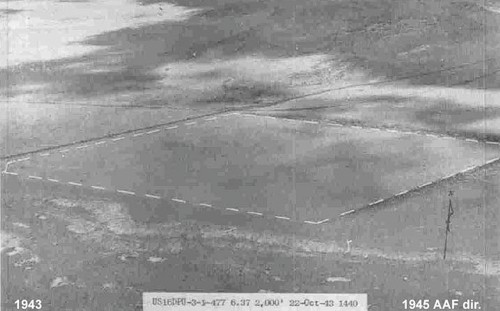
Fernley Intermediate Field, Nevada, 1943
Poor quality aerial photo of Fernley Intermediate Field, located within the doted white lines.
| History of Barrow FSS Facilities and Services | |
| Barrow, Alaska | |
| 11/04/44 | MRL range commissioned by Navy. Aerophare also in operation. AACS guards 4420, 3105 and 1638 kcs, point-to-point on 5065, 2610. Air/ground 4220 and 2994. |
| 3/30/46 | AACS decommissioned. Navy assumes operation. |
| 8/11/46 | 2912/4220 kcs commissioned. |
| 10/09/46 | Moved to new control station. |
| 3/13/47 | 130 kcs decommissioned. |
| 4/01/47 | Aerophare on 437 kcs relocated to 2 miles from SW end runway 2-20 with output of 2kw. |
| 4/08/47 | High powered “H” marker commissioned. |
| 9/08/47 | New MRLZ range commissioned. Located 13,768 feet SW end of runway 2-20 at a bearing 200 degrees magnetic. Operation of AN/CPN-11 range discontinued. |
| 3/07/48 | Homing beacon on 437 kc has been relocated to 15,000 feet from field on a magnetic bearing of 200 degrees. Old Homer will be used as standby. |
| 3/18/48 | Radar beacon AN/CPN-6 commissioned by AACS. |
| 3/20/48 | D/F station commissioned by AACS. D/F service on frequencies between 2 and 10 mcs. |
| 3/20/48 | Air/ground facilities commissioned by AACS; send-receive channels, 3452.5, 6355, 7560, 8200, 10645, 11445 kcs, A-1 emission only. |
| 4/01/48 | MEW range on 287 kc commissioned. Identification POOL. |
| 3/04/49 | Army airways established 24 hour guard on 8200 and 4595 kcs. |
| 3/24/49 | MLW radio range on 287 kcs converted to MHW. |
| 8/05/49 | Circuit 177V moved from Army receiver site to Army transmitter site. |
| 9/01/49 | Guard on 6210 kcs discontinued. |
| 3/16/50 | Off airways frequency 4055 kc commissioned. |
| 8/18/50 | Transmit/receive on 2912 kc decommissioned. 5037.5 kc commissioned. |
| 5/10/51 | 121.5 mc commissioned. |
| 3/30/53 | Air/ground 122.1, 122.2 and 126.7 commissioned. |
| 4/14/53 | Radio beacon 437 kc decommissioned. |
| 6/30/53 | 4220 kc decommissioned. |
| 9/20/53 | MHW radio range on 287 kc decommissioned. |
| 10/01/53 | FAA operation of Point Barrow discontinued. |
| Can you help? We are building a Flight Service historical page. Do you have access to any old photos related to Flight Service buildings, equipment, personnel, or other related historical data? | |
Montezuma Radio (KCEV), Iowa 1944-47
Photos submitted by A.C. Miller
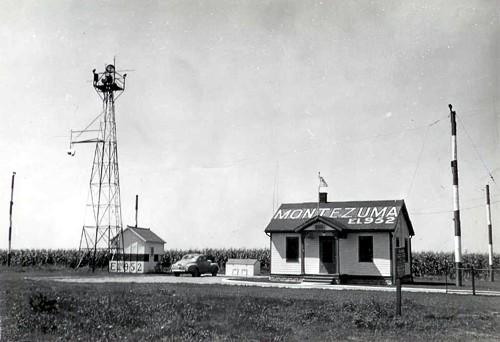
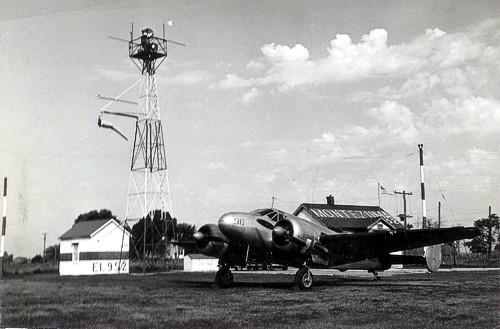
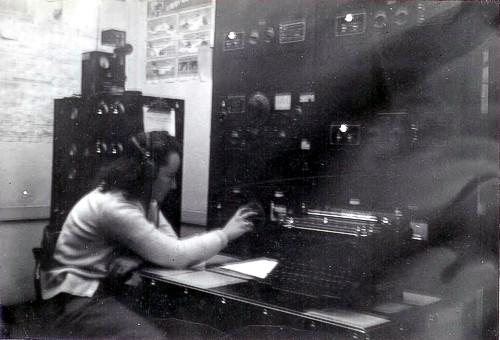
Submitted by A.C. Miller
Montezuma Radio (KCEV), Iowa 1944-47
My mother, Gwendolyn Jeanette Miller was an Aircraft Communicator, CAF-5 and CAF-7 in Montezuma, Iowa during WWII, between 1944 and 1947. Submitted by Gwendolyn’s daughter, A.C. (Ace) Miller.
View photo of Gwendolyn’s CAA class photo, 1944
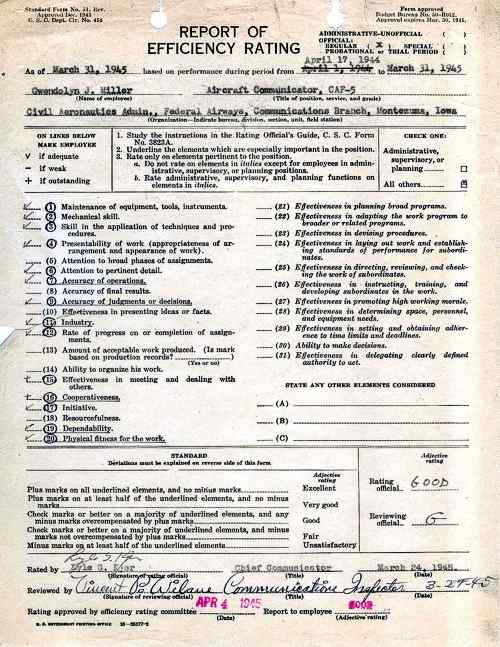
Submitted by A.C. Miller
Montezuma Radio (KCEV), Iowa 1944-47
Efficiency rating for Gwendolyn Jeanette Miller. Aircraft Communicator, CAF-5.
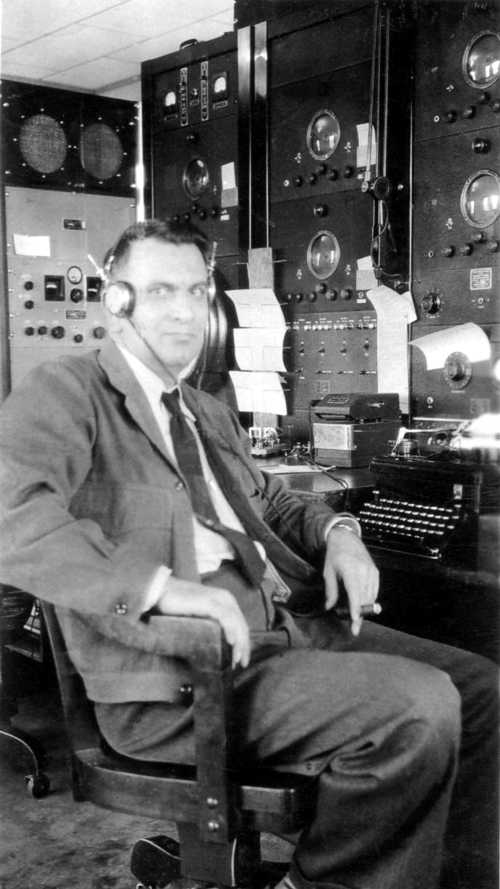
Submitted by Martha Ronaldson, daughter of above Arley Evans
Nenana Radio (ENN), Alaska, 1944
Arley Evans (1905-1980) working as a radio operator at Nenana Radio with his wife Bernice (see below photo). Arley was originally stationed at Nome Radio, his first Alaskan assignment, when World Ward II broke out.
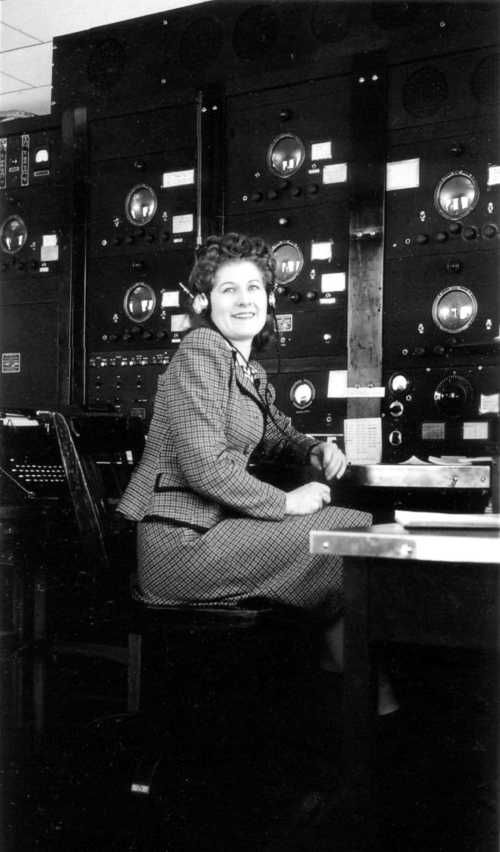
Submitted by Martha Ronaldson, daughter of above Bernice Evans.
Nenana Radio (ENN), Alaska, 1944
Bernice Evans (1910-1999) working as a radio operator at Nenana Radio. Bernice’s daughter, Martha, said her mother was working in the local cafe and heard the news of the attack on Pearl Harbor. The CAA asked my mother if she’d like to join my father (see Arley Evans photo above) as a husband/wife team, so she attended the first class in Anchorage and was assigned to Nenana with her husband, Arley. There are many references to them in the Mukluk Telegraph (an Alaskan newsletter).
Seattle Military FSS & Seattle En Route Combined Facility, Washington, 1945
Courtesy of Society of Airway Pioneers
This was a combined facility with a military Flight Service Station and the Seattle En Route Center.
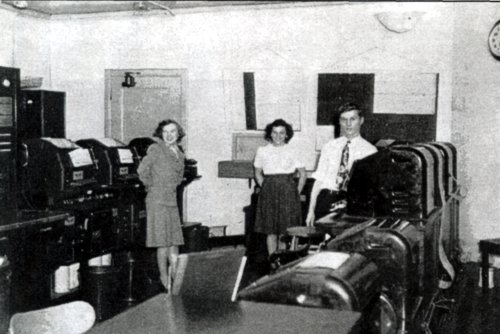
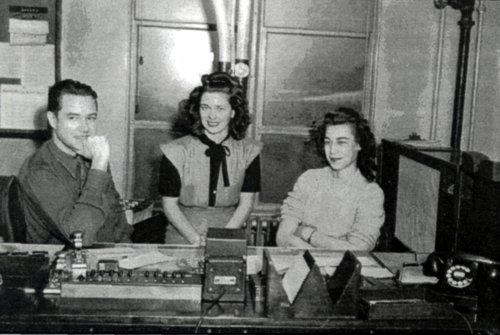
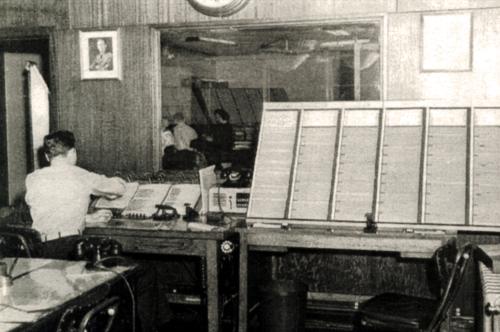
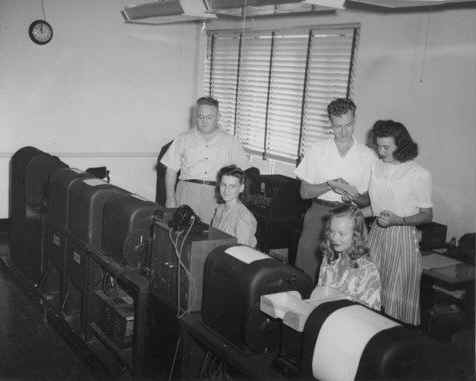
Memphis FSS (MEM), Tennessee, about 1945
From left to right are: Vernon Goldsmith, Earth Baumgartner, Walter Mewborn, Jean Franks, Carol Fakes (seated).o
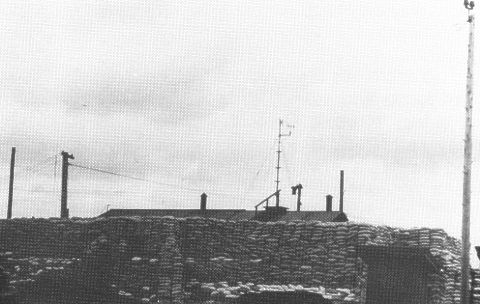
Everett OFACS (PAE), Washington, during World War II
Everett, Washington (Seattle) Overseas Foreign Aeronautical Communications Station. The facility was camouflaged during World War II.
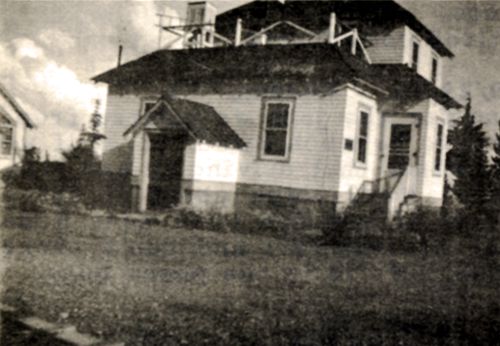
Courtesy of Society of Airway Pioneers
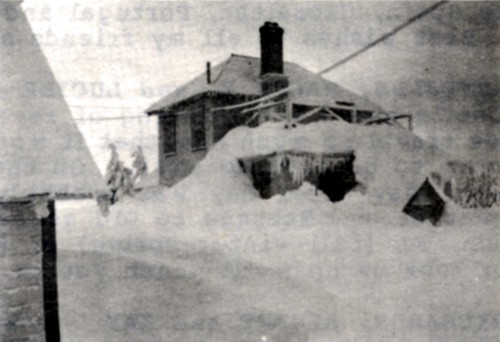
Courtesy of Society of Airway Pioneers
Mullan Pass Interstate Airway Communication Stations (INSAC), Montana, 1946
Summer vs. winter photos
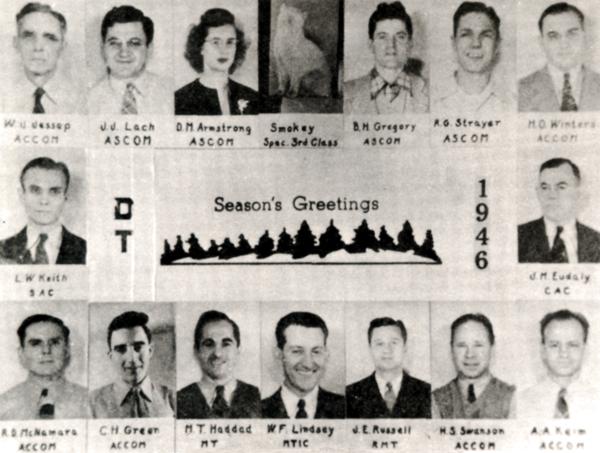
Courtesy of Society of Airway Pioneers
Detroit Interstate Airway Communication Stations (INSAC) (DET), Michigan, 1946
Detroit INSAC employees Christmas card.
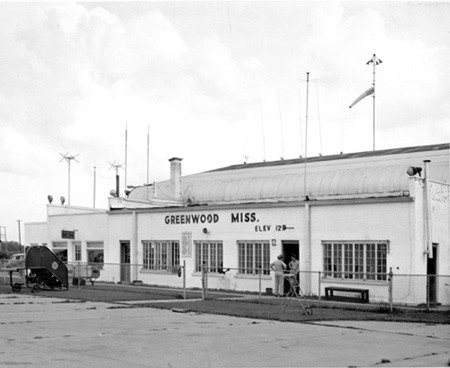
Greenwood CAA (GRW), Mississippi, 1946
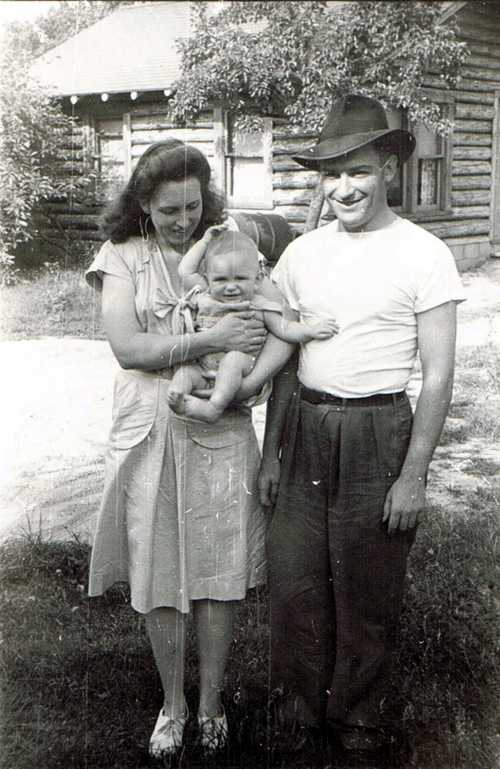
Submitted by Ted Manis
Gladwin CAA (GDW), Michigan, 1947
Gladwin CAA employee, Tom Manis and his wife Eileen.
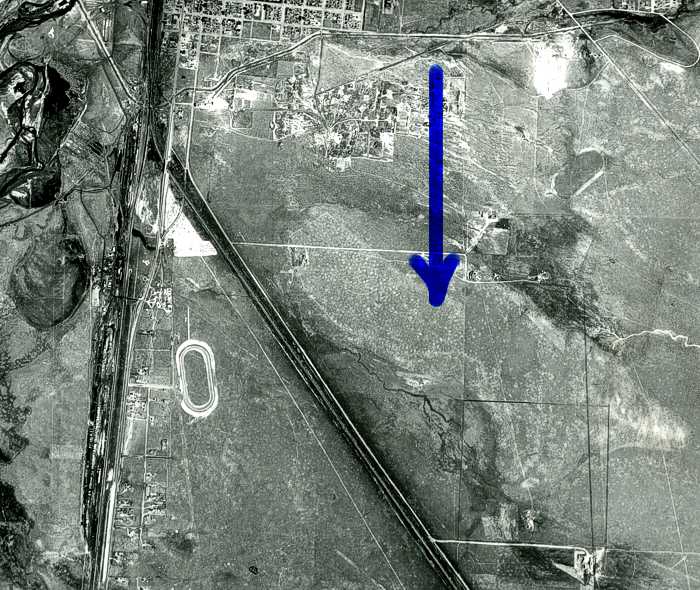
Photo submitted by Steve Wolff
Laramie CAA Intermediate Field (LAR), Wyoming, Site 37
Soil survey photo, June 30, 1947. The arrow points to the general location of the 115 acre former CAA intermediate field (the lighter shaded area). Most of it is covered up now with Mini storages. Some underground cable still remains. The field was probably in use between 1923 to 1934.
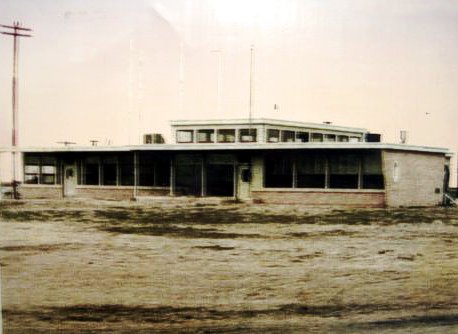
Submitted by Phillip Schulz
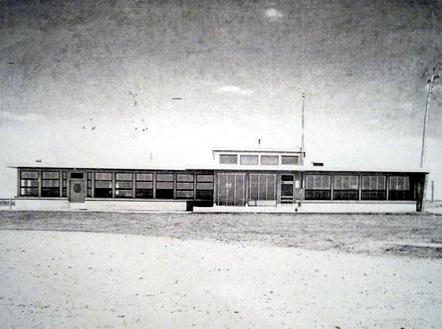
Submitted by Phillip Schulz
Russell FSS Building, Kansas, 1948-49
The city of Russell, about 2011, uncovered the windows around the top and opened and removed the false ceilings
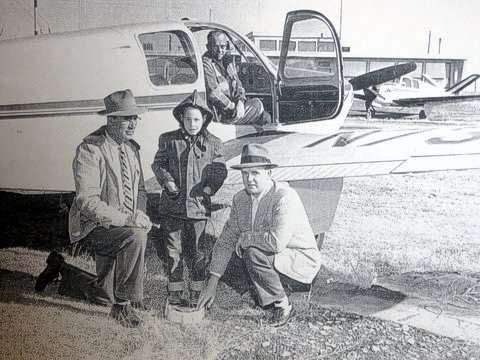
Submitted by Phillip Schulz
Russell FSS Building, Kansas, 1948-49
Photo taken in front of the Russell Flight Service Station just after the facility opened in the late forties. Names are unknown.
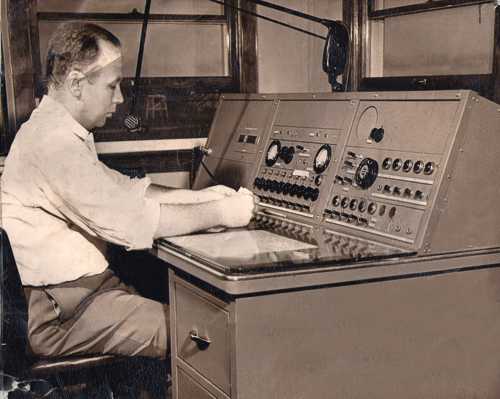
Eau Claire Radio Station, Wisconsin, 1949
Carroll Norgaard working the radio position
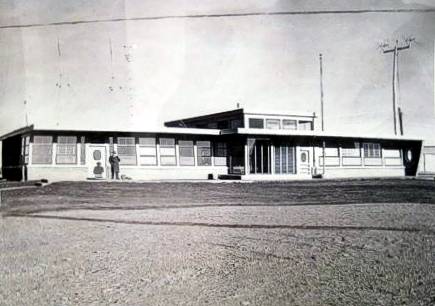
Submitted by Phillip Schulz
Russell FSS Building, Kansas, 1949
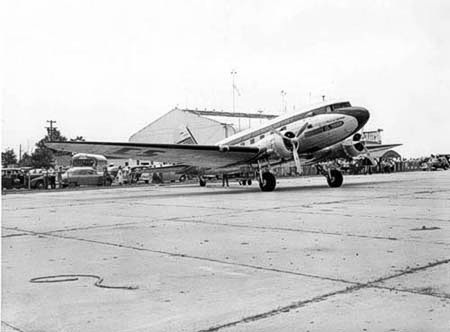
Greenwood Airport (GWO), Mississippi. 1949
A C&S DC-3 parked on the Greenwood ramp
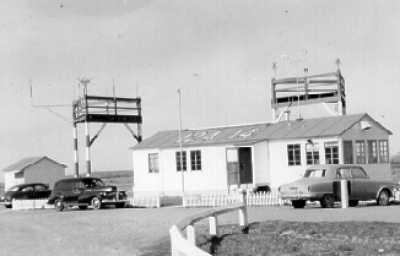
Crescent City FSS (CEC), California
Date unknown
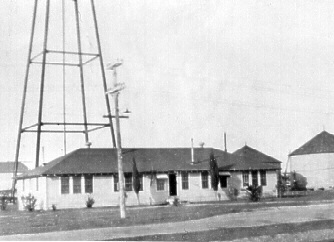
Crissy Field FSS, San Francisco, California (Crissy Field)
An excellent analysis of the history, flight, crash, and search and rescue operations of a B-17G Flying Fortress that crashed in Tull Canyon in the Buckhorn Wilderness area of Washington’s Olympic Mountains. Be sure to check out the links at the bottom of the document for additional photos and information.
1952 B-17G Crash Analysis
Written by Paul Eisenberg
Medicine Bow National Register
A 203 page document requesting Medicine Bow Airport and surrounding structures be preserved as an historical landmark by the United States Department of Interior National Park Service.
This searchable file contains the initial application and 180 pages of historical supporting documents from 1929 to 1941.